Digital Nomad Life in Tokyo
I've just wrapped up two months living in Tokyo, working remotely online from co-working spaces, and living in a short-term rental apartment in the city's centre. Here's a bunch of stuff about my time there!
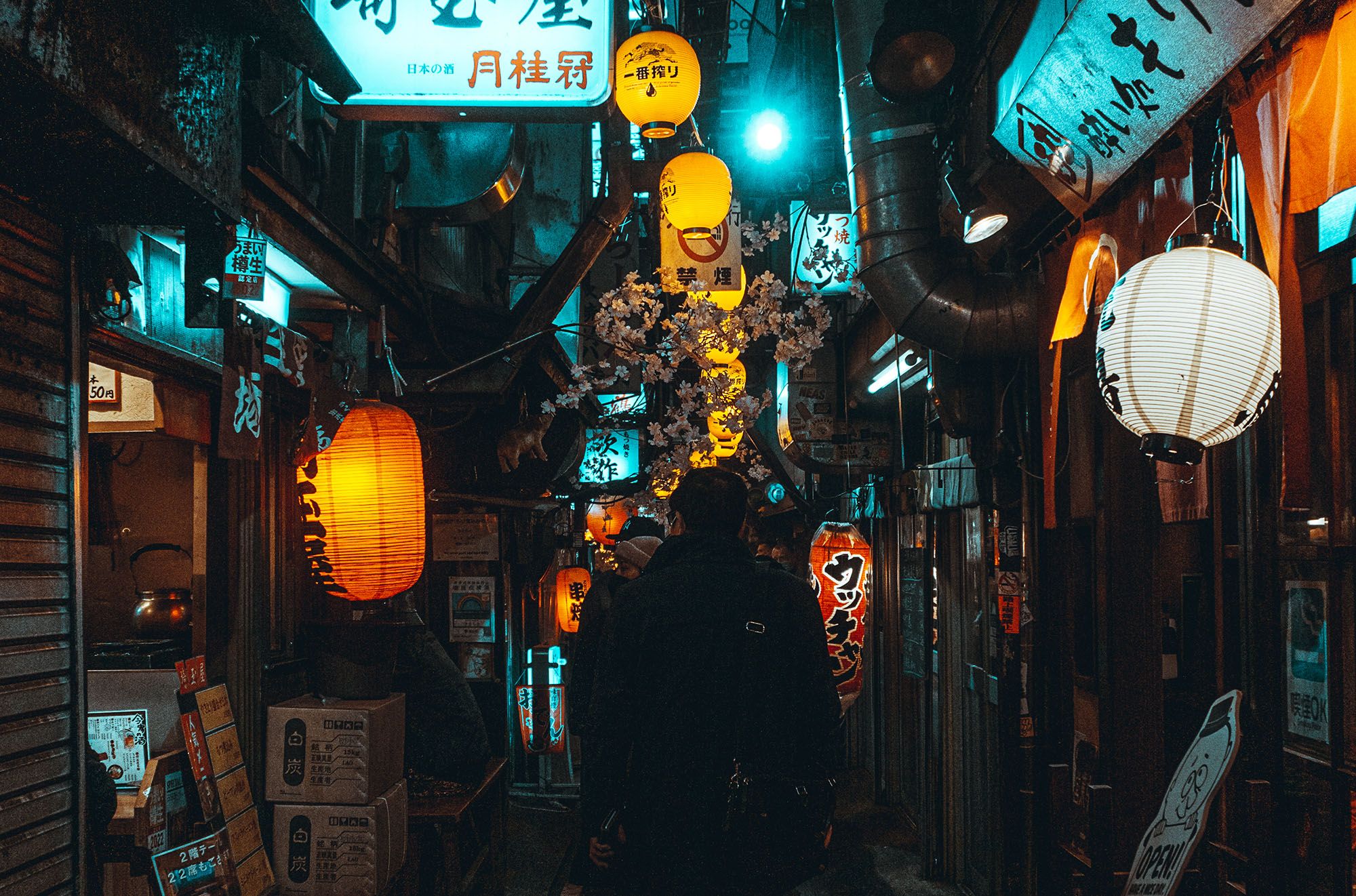
Introduction
I've just wrapped up two months living in Tokyo, working remotely online from co-working spaces, and living in a short-term rental apartment in the city's centre. Here's a bunch of stuff about my time there!
The term digital nomad has some definite negative connotations these days, so it's not my favourite term to use, but it's the most well-known so it's what we're going with.
For those who haven't heard it before (I know my grandma is subscribed to this blog!), it refers to the concept of someone being able to work online from anywhere in the world, their location not tied to their job or income, so they're then free to move about the world, choosing their home based on factors outside of work; climate, cost of living, proximity to friends and family, etc., and to change location whenever they like.
Why Tokyo?
I started learning Japanese at 11 years old, when my school randomly brought in two Japanese teachers, which seems to be young enough that a load of things like pronunciation, conversational grammar, and being able to read hiragana and katakana sunk in. Plus, I really enjoyed studying it, so I continued right through high school and university.
However, I never really got past the basics, and can't remember much after so long, so I can't hold a conversation, and barely keep track of the topic of most conversations.
Regardless, it's felt like such a familiar place ever since then, associated with childhood, and I've travelled there 5 times before this trip. However, never longer than a week or so at a time.
So I settled on Tokyo for a few reasons;
- To keep improving my Japanese
- It's a city well-known for being great for photography
- It's an easy city to live and work in, with infrastructure, cleanliness, safety, and everything set up wonderfully well
- It's relatively close to my home in Sydney
- I have some friends there
- It would be spring, and I've always wanted to see the famous cherry blossoms
It seemed like a good place to start my year of travel, to ease in somewhat.
Duration
As for the timeframe, I chose two months to have a proper amount of time to feel like I'm living, rather than just holidaying. I've found at least a month is needed to get into routines; to have a regular grocery store, to memorise your suburb, to become a regular at a favourite cafe, to make friends, and to settle in and start enjoying a routine daily life, rather than moving from tourist spot to tourist spot. After this trip I'd say I'd increase this even to 3 months – I would have happily stayed on longer! So I decided on all of March and April.
Preparing for Tokyo
Accommodation
I've really gone off Airbnbs these last few years; the inconsistencies in experience drive me mad, the wildly different prices are tricky, the last-minute cancellations can ruin a trip, and when I'm going somewhere where I need to work I need my accommodation to be something I don't even need to think about.
Hotels are the natural alternative, however I have a bunch of medical-related dietary restrictions, so need a kitchen to be able to cook my own food, and hotels aren't known for having much kitchen space (or a space that doesn't feel completely depressing!). Plus, hotels don't seem to have any sort of long-stay rates (most don't even let you book more than 29 consecutive nights), so you end up with insanely expensive costs.
The best solution I've found is this new type of business I've seen popping up. I'm still not sure of the best name to call them, but something like private apartments in co-living buildings. Hmlet, Sonder, Uko, and LifeX are all good examples of this, and Hmlet was the one I went with for Tokyo. If I can, I'm wanting to spend my time in this type of apartment as much as possible this year – it's SO much easier than hotels or Airbnbs!
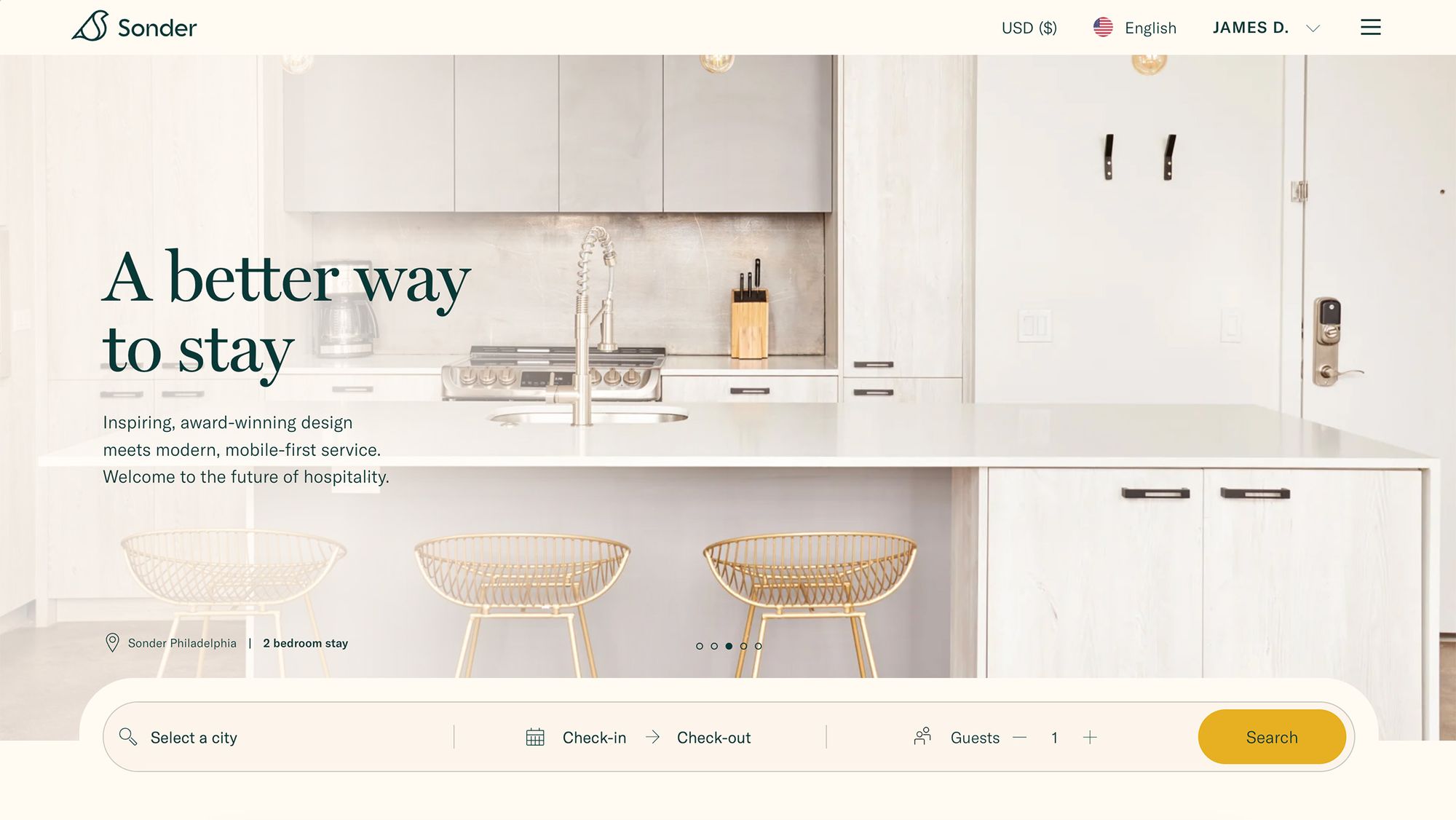
They offer apartments, rather than hotel rooms, with kitchens, bathrooms, laundries, and everything else you need to feel comfortable and at home. They also usually have a 1 or 3 month minimum stay, which keeps costs nice and manageable. And the good ones also offer community events, cleaning, and even gyms and coworking spaces in the building. They're a larger business so the experience is consistent and reliable, and they're always beautifully furnished.
I went with Hmlet for this Tokyo stay, but booking was a bit risky. They have a policy where you can't book more than 30 days in advance of moving in (I guess they're catering to longer-term renters more so than remote workers), so I had to book my flights and then just 🤞hope🤞 an apartment was available. Luckily, one was 😅
I ended up in a small studio apartment in the neighbourhood of Gotanda. I hadn't heard of the suburb before, but it ended up being perfect (more on that later). And the apartment itself was great! My previous stays in Tokyo have been tiny places, and this place definitely was tiny, but designed and set up in such a comfortable, clever way. The only downside was the kitchen was too small to cook anything comfortably, and I guess this is due to most people in Tokyo eating out for their meals 🤷♂️
Check out this interactive 3D thingamajig to see what my studio looked like - not exactly the same, but close enough 👀
Documents and preparation
If you're Australian you can stay in Tokyo for up to 90 days without needing a visa, so I made sure to keep my trip below that threshold and things ended up being nice and simple 👍 You still need to fill out a whole bunch of covid-related documents before landing in the country, but that changes so often I won't link here, the Japanese travel website is your best bet.




I had a free seat next to me! 🥳
This one is super important and very handy: if you're going to Tokyo, set up a Suica or Pasmo card in Apple Wallet on your iPhone before you go. You preload it with cash via Apple Pay, and can then use it for almost all trains within Tokyo, as well as convenience stores, vending machines, and even some shops. It's the easiest way to go as cash-free as possible while in Japan, and doing it digitally on your phone means you can top it up whenever you like. This also means you can avoid lining up at ticket machines to get a physical card or to top up. Highly, highly recommend doing this, and you can do it before even arriving in the country.
The only other thing to keep in mind document-wise is to always carry your passport on you when moving around Japan. Apparently the police can ask to see it at any time, and while I've never been asked that, I didn't want to risk anything so kept it with me no worries.
Arriving and Settling In
The flights from Sydney to Tokyo seem to be mostly overnight flights. Mine left Sydney at 9pm and arrived at something like 7am Tokyo time. Thankfully there's only an hour or two time difference between the two cities, depending on daylight savings, so jet lag wasn't a huge issue 😁💤
Tokyo has two airports, Narita and Haneda, with Haneda being much closer to the city centre, and the one I arrived in. I caught the monorail from the airport – skipping the ticket queue entirely thanks to my digital Suica card mentioned above – and was in the centre of Tokyo within 30min of leaving the arrivals gate.
I was travelling with a big backpack, a roller suitcase, and my guitar case, and all this luggage combined with me getting into Tokyo right on the morning business peak hour would have meant a very Not Fun train experience.
I had a solution though; my WeWork membership gives me access to any WeWork globally, as long as I book first, and I'd booked a day at the WeWork right next to the monorail station in Tokyo. So rather than immediately getting on a train to my apartment after the monorail, I walked to the WeWork, got there just as they opened at 8am, and settled in for an hour or so to wait out the packed commuter trains with tea and a quiet, comfy room.
Once things calmed down on public transport and the work day had begun in earnest, I walked back to the station with all my luggage, got the train to Gotanda station, and found my apartment.
Once there I crashed 😆 I ordered a sushi lunch, ate, and slept. I was exhausted, having just packed up my entire apartment, moved out, and then flown overnight to Japan all within a few days, so it took me a solid couple of days of being unproductive to get back into the swing of things.
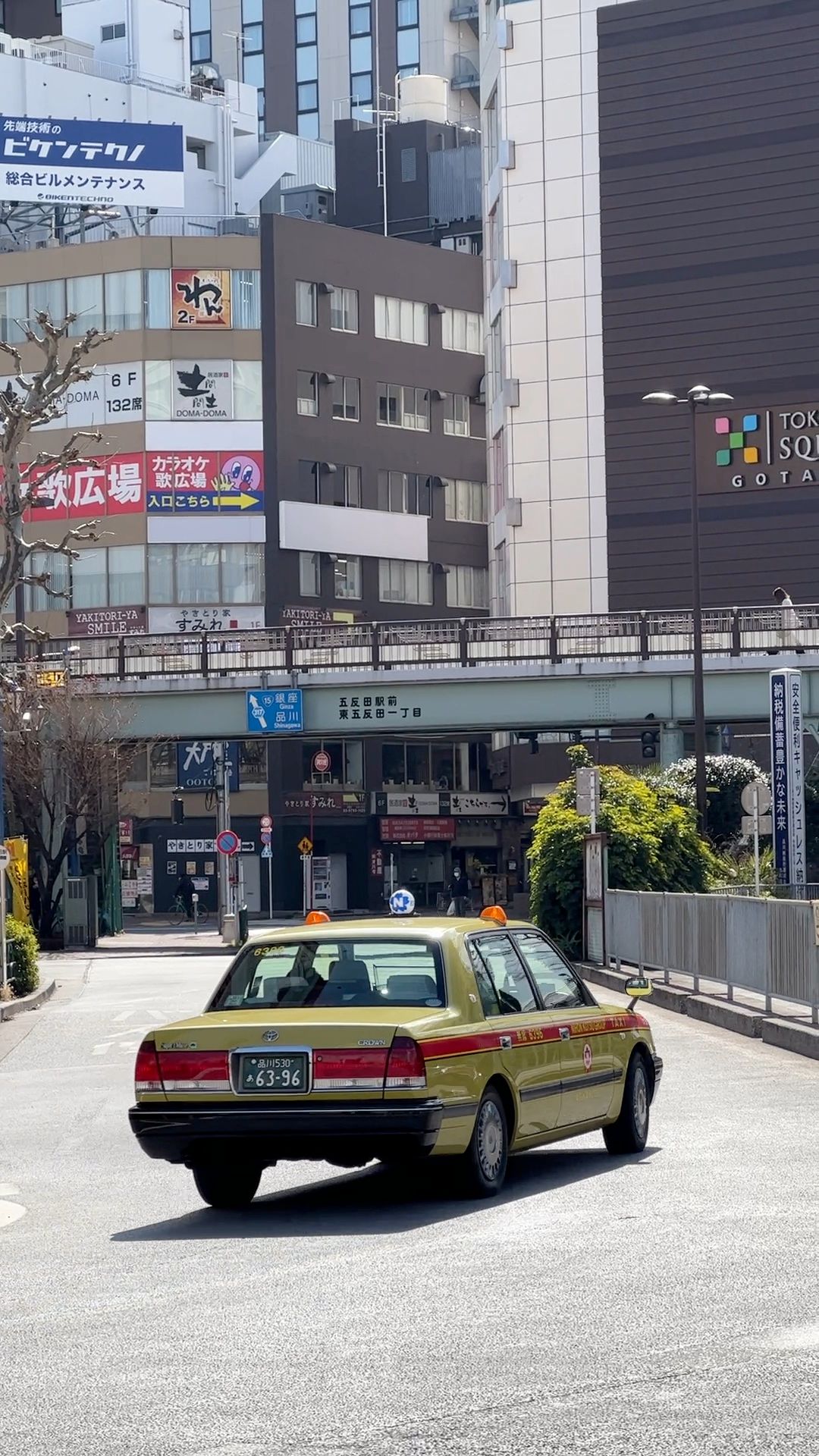

Overall, though, it was just as easy as I remembered getting around Tokyo, even while frazzled from travelling and carrying a lot of luggage. Everything is fantastically signposted and labelled, and Google Maps is super accurate with the trains, even going so far as to tell you which carriage to get on to be as close as possible to your exit at your destination station.
Internet and SIM card
This used to be quite an ordeal! I remember queuing in the airport to get a local SIM, spending an hour catching up on all the missed messages and notifications, and being super careful about my very limited amount of data.
Thank goodness for eSIMs! There are a bunch of apps now that will install an eSIM on your phone, let you top it up whenever, and manage it all digitally, at pretty good rates 🤓 I used Airalo for this trip, and probably will continue to do so for all my upcoming trips as well. It was so easy to use (aside from the initial setup being a bit fiddly), their homepage widget made it a breeze to see how much data I had left, and topping it up within the app took seconds each time. Highly recommended.
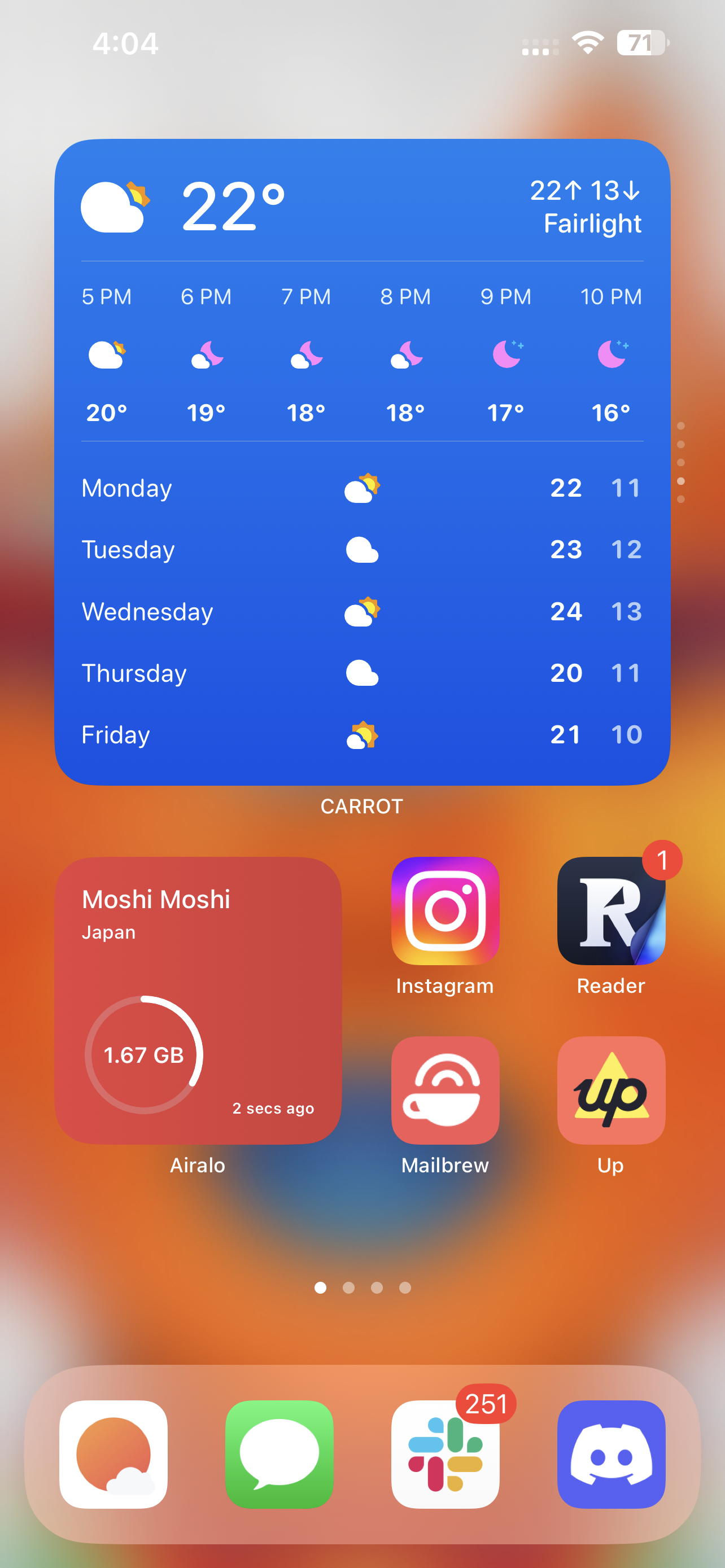

The concept of the decentralised home network
This brings me to this idea I've been thinking about since spending time in Montreal last year; it feels like so much of life is decentralised, not linked to a location, and digital now. Which is great! It feels so convenient and simple, and like you can pick up your life, travel to a new country (depending on the country of course), and continue on without much interruption. Here's an example.
I landed in Japan. I already had like 20 different WeWork offices throughout the city I could just walk in to by scanning my membership card at the door, right after getting off the plane, giving me a comfortable couch, coffee, tea, wifi, and even wellness/rest rooms depending on the building.
I have a gym membership with Anytime Fitness, and my little key thingy will open the door at any of them throughout Tokyo. Fitness sorted, nothing to change on my end. Even the equipment is the same across all those Anytime Fitness gyms.
My SIM card is managed through Airalo, as mentioned above, so I have data immediately, and can set up new accounts and manage them without stepping foot in a phone shop.
Uber and Uber Eats meant I could get amazing sushi delivered as soon as I arrived at my apartment, jet lagged and exhausted, when I didn't have the mental capacity to find a good place to eat.
And with Apple Wallet, Apple Pay, my Suica card, and neobanks like Wise, I have money in the local currency, ready to use before even landing in the country.
This can be taken further; your accommodation handled by Airbnb, or Hmlet, or Sonder, and they all have apps where you can manage everything. Your books come with you on Kindle, and you can grow your library from anywhere in the world. Even Netflix or YouTube remembering your library of media, picking up where you left off no matter what TV/screen you plug it into. It's crazy to be in the middle of watching a show, fly to a different country, log in to Netflix on the TV there, and just keep watching your same show while cooking dinner on the other side of the planet.
We're incredibly lucky to live in a time like this. It blows my mind.
Okay, back to Tokyo after that tangent.
Daily Life
After recovering from the travel itself, I started scouting WeWorks. I tried out Shimbashi (seems to be closed now), TK Ikedayama, Iceberg, Link Square Shinjuku, Tokyo Square Garden, and the ARGYLE aoyama.
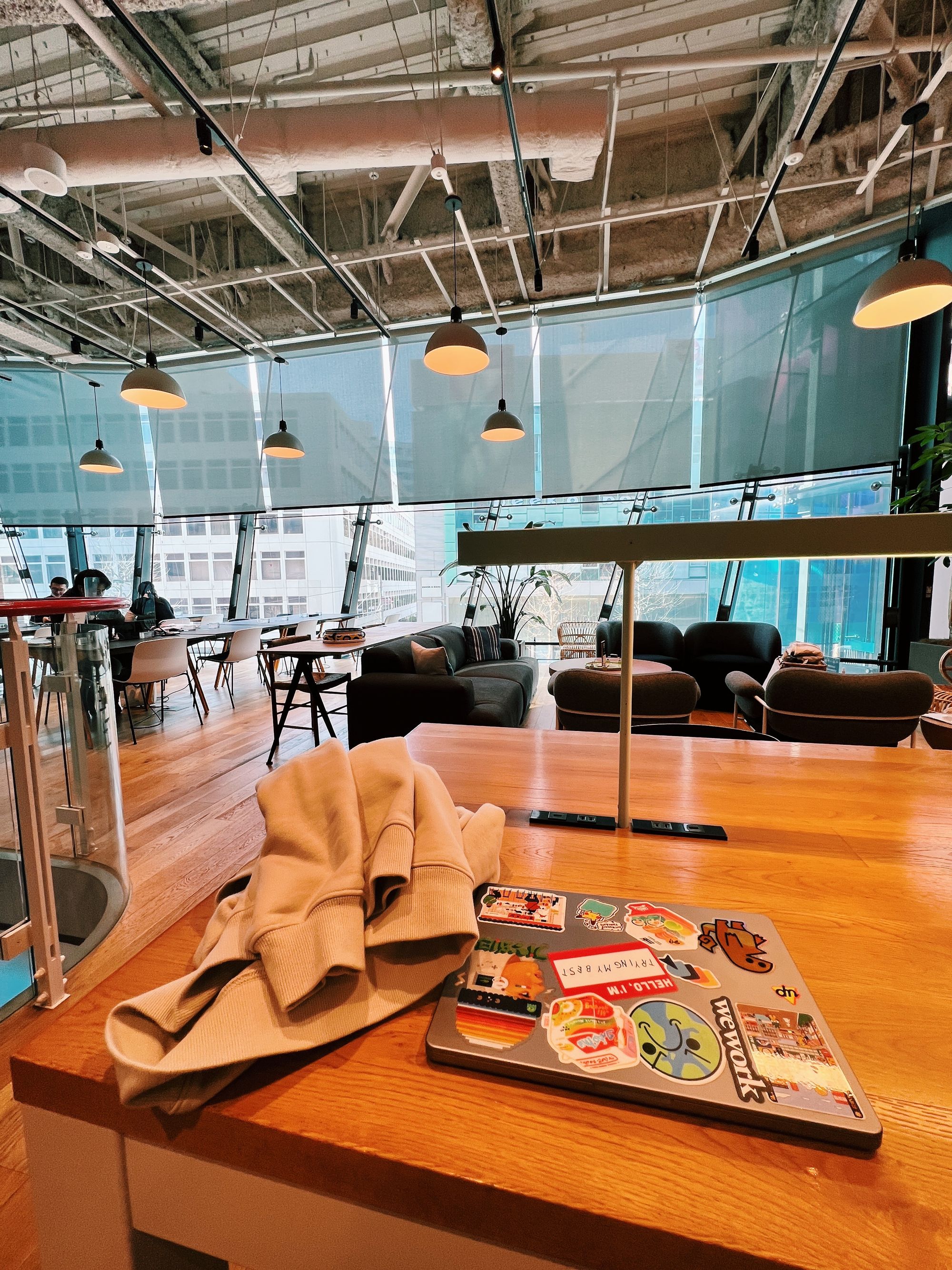






Standouts were Link Square Shinjuku and Tokyo Square Garden, both had incredible views, but I ultimately settled on Iceberg as my "home" WeWork for my time in Tokyo. It's in Jingumae, right between Harajuku and Shibuya, in such a cool building (sharing space with companies like Shopify and Buzzfeed), and had a cafe right inside the co-working space. Plus, being walking distance to so many cool photography locations to explore after work, and all the other buzzing Harajuku shops and sights, as well as only 4 stops on the train each morning from my apartment, all made it the perfect spot for me.
There are so many options for co-working spaces, but I've chosen WeWorks for a few reasons: they're consistently beautiful spaces, so I know wherever I end up I'll be in a light, well-designed, aesthetic workspace and can feel inspired and productive, they have a global membership that I can book and manage from my phone, no matter what city I'm in, and they're usually in pretty cool, high-traffic areas and buildings in cities around the world. I like them a lot!
Neighbourhoods
Speaking of working and trains and suburbs, here's a quick rundown on some of the areas I spent most of my time in.
Gotanda: My "home" neighbourhood.
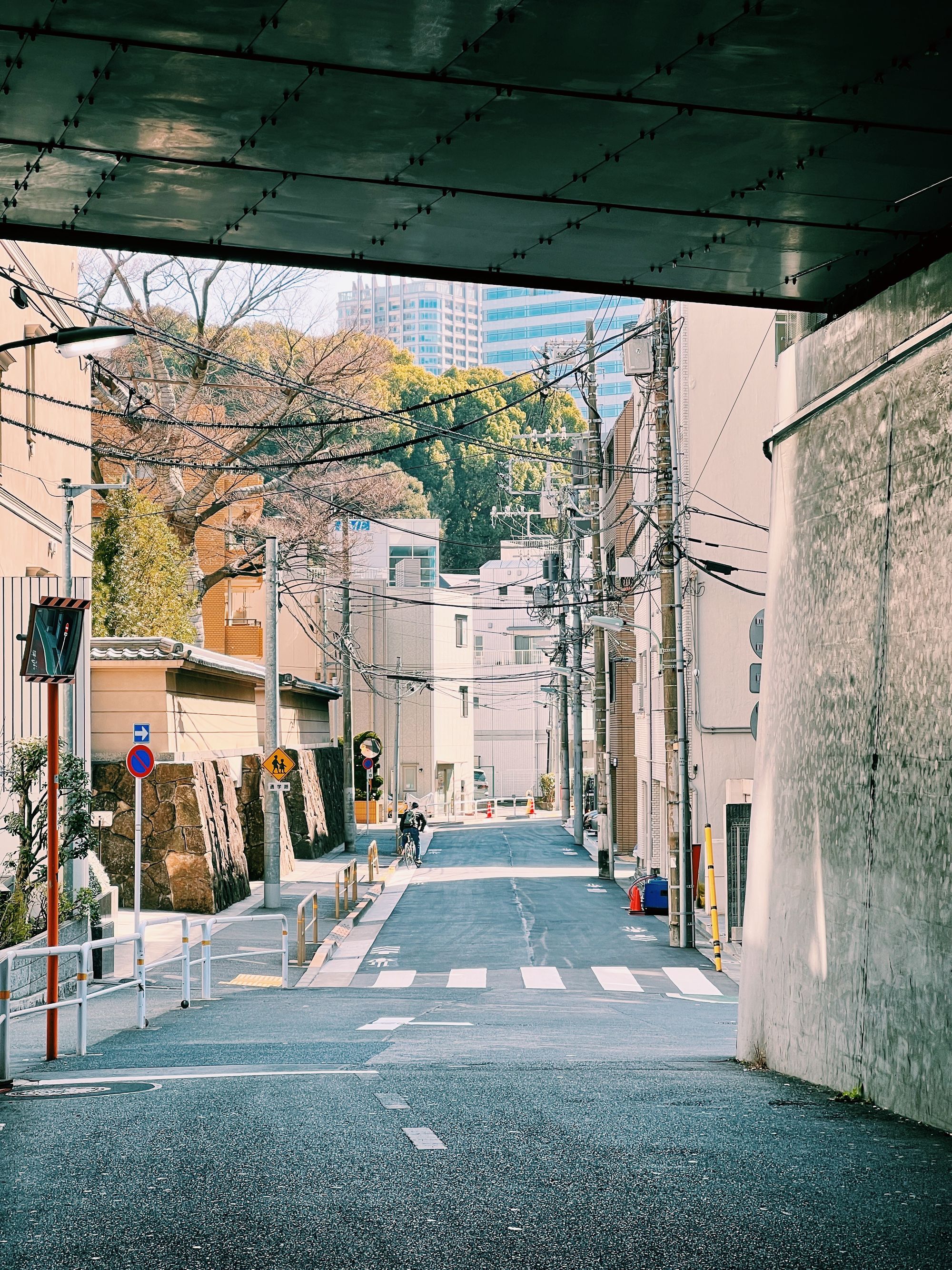





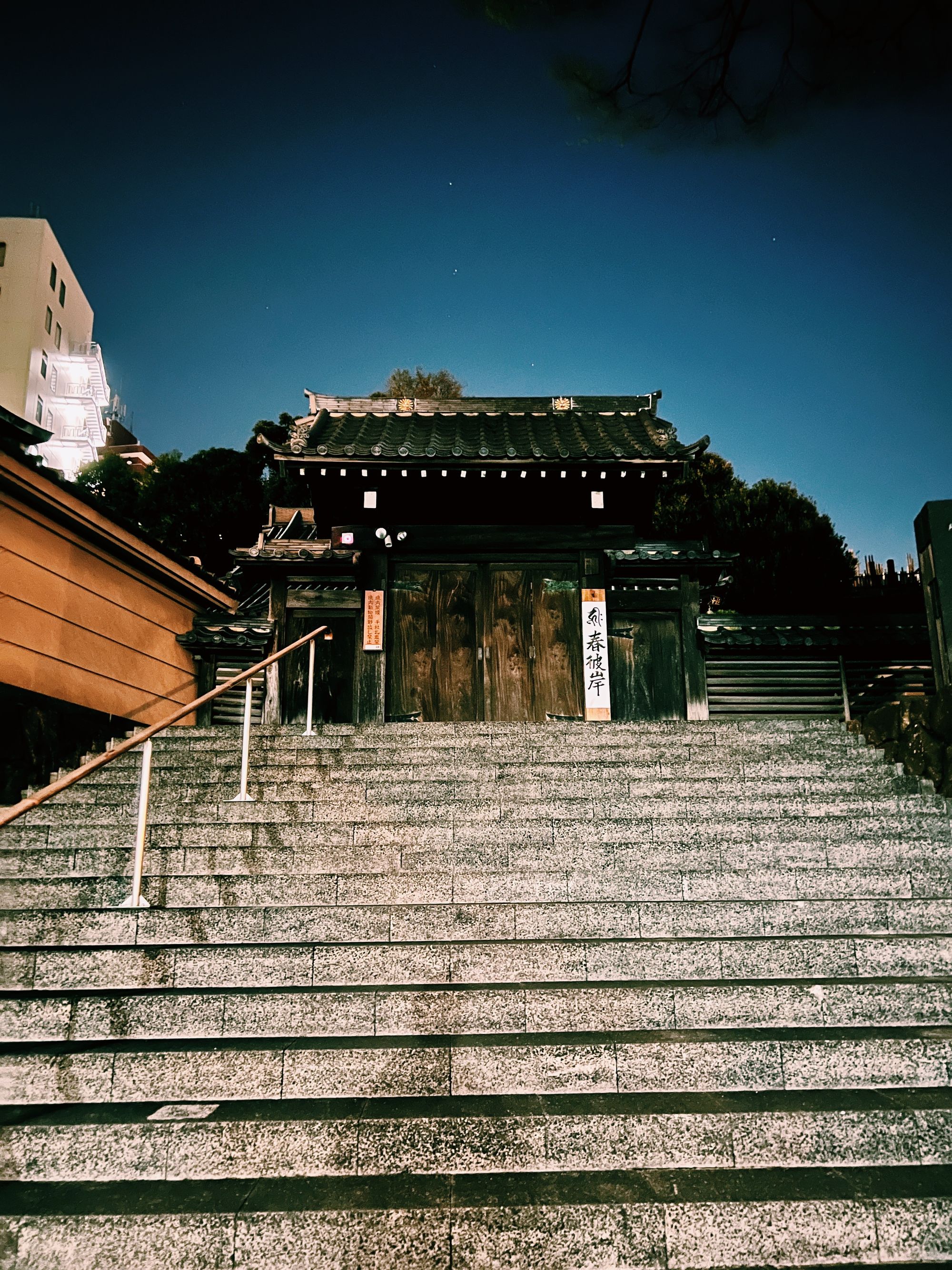

Some different areas around Gotanda
I booked my apartment not knowing anything about the area, but was very pleasantly surprised. It felt like a comfortable city neighbourhood, filled with everyday lives, rather than a tourist hotspot. Most of my last trips to Tokyo have been based around Asakusa or Ueno, so this was such a nice change, and I felt like I had an experience much closer to living in Tokyo, rather than visiting as a tourist. Apparently the area has a reputation for having a dodgy spot with lots of love hotels, but that never bothered me, and amenities, restaurants, transport options, and shops were all fantastic, as was the proximity to the river once the cherry blossoms started blooming. Hotspots like Meguro River, Shibuya, Shinjuku, Harajuku, and more were all easily accessible on the Yamanote line, and the subway was there for all other spots like Ginza. There was even a small gymnastics club a 7min walk away from my apartment, such luck! Highly recommend this area, it was great.
Jingumae: my "work" neighbourhood.


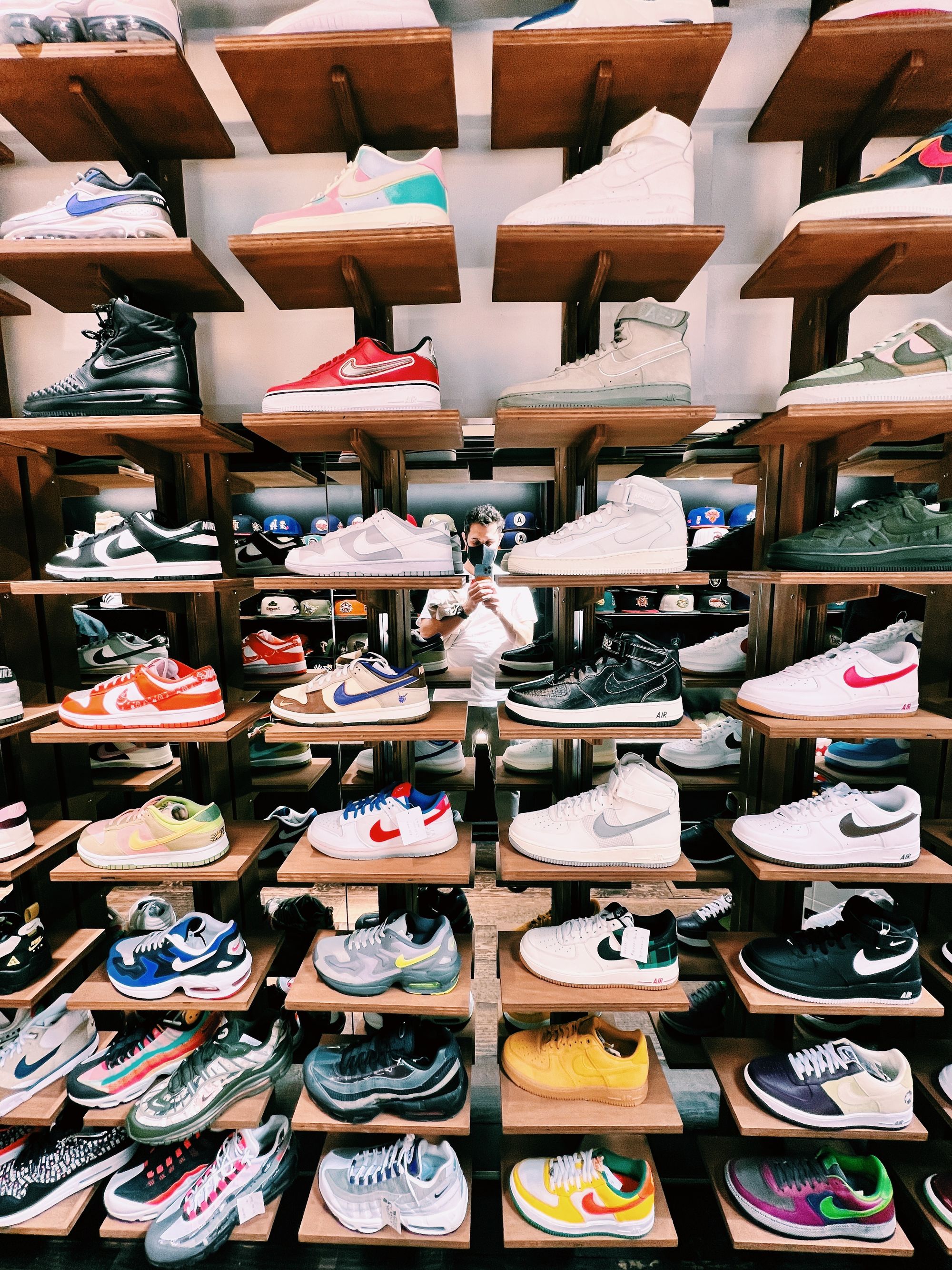
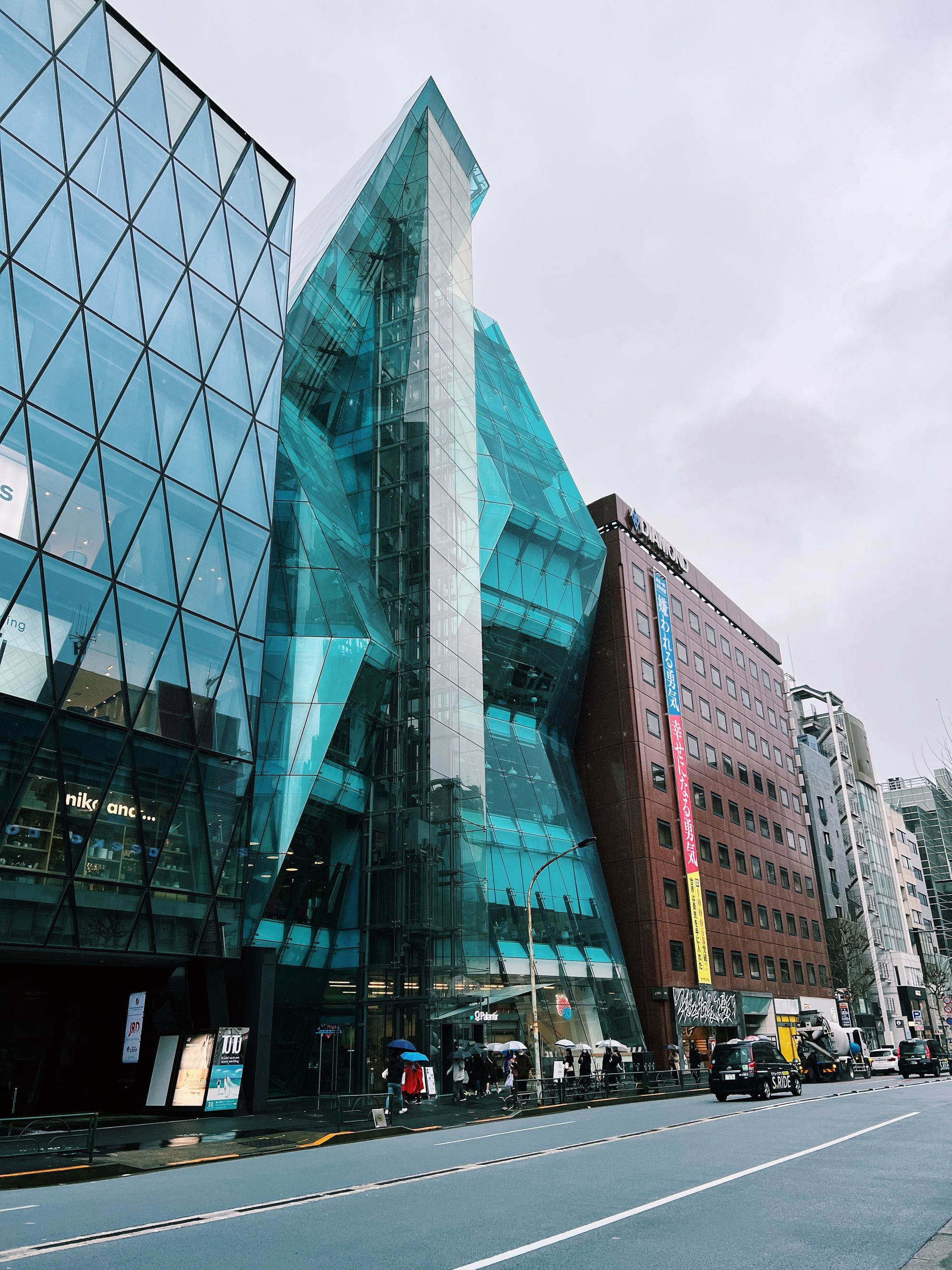
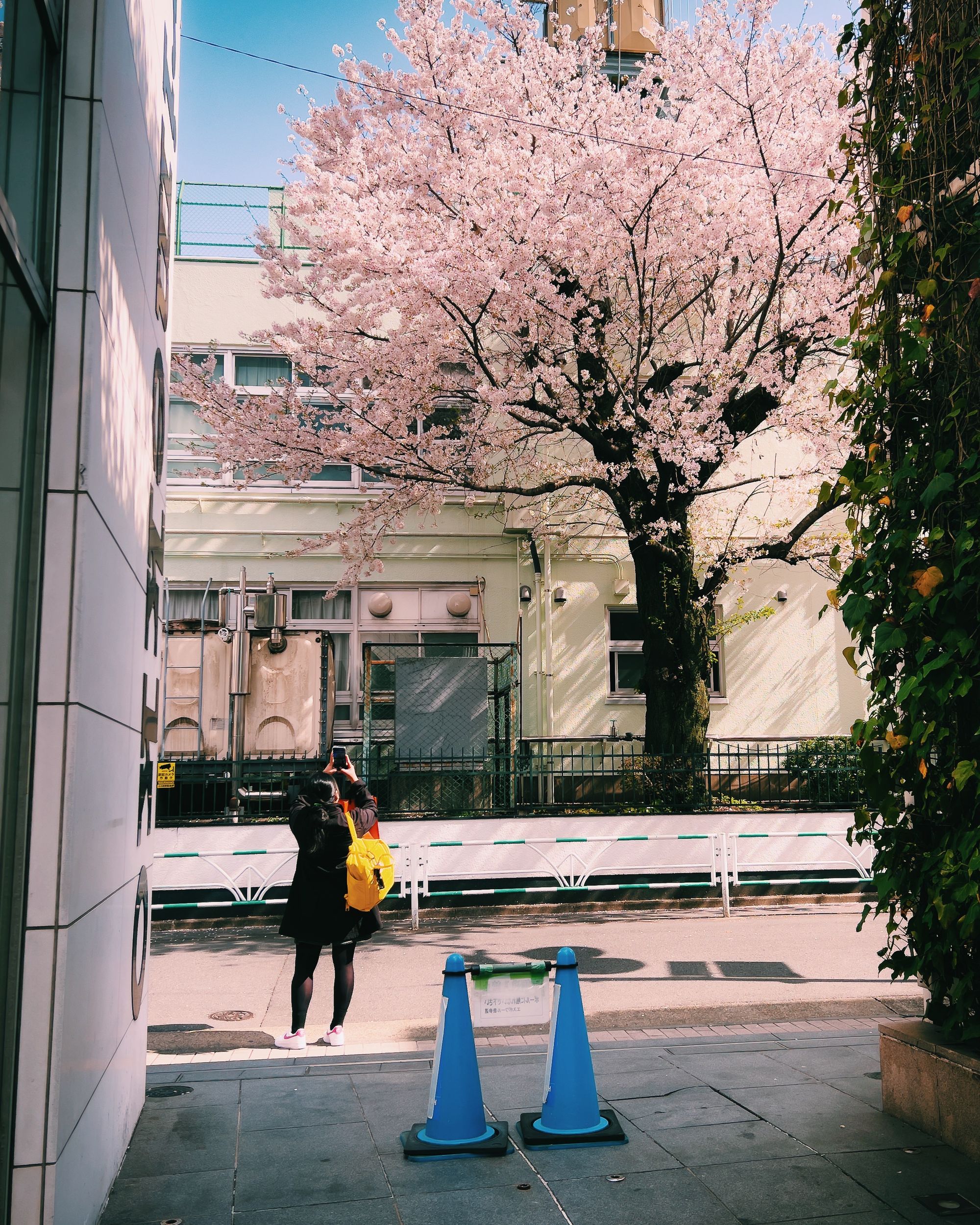
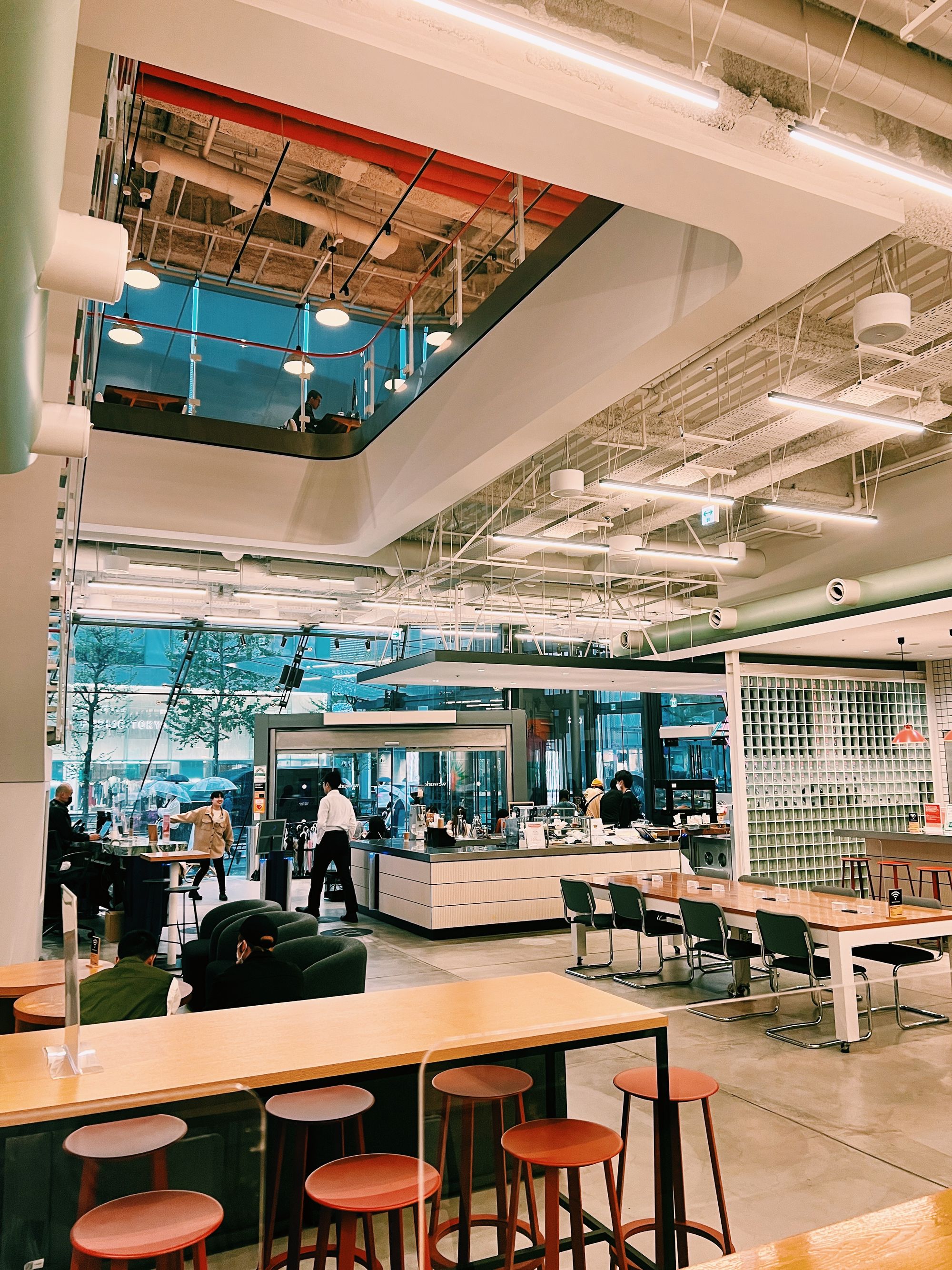
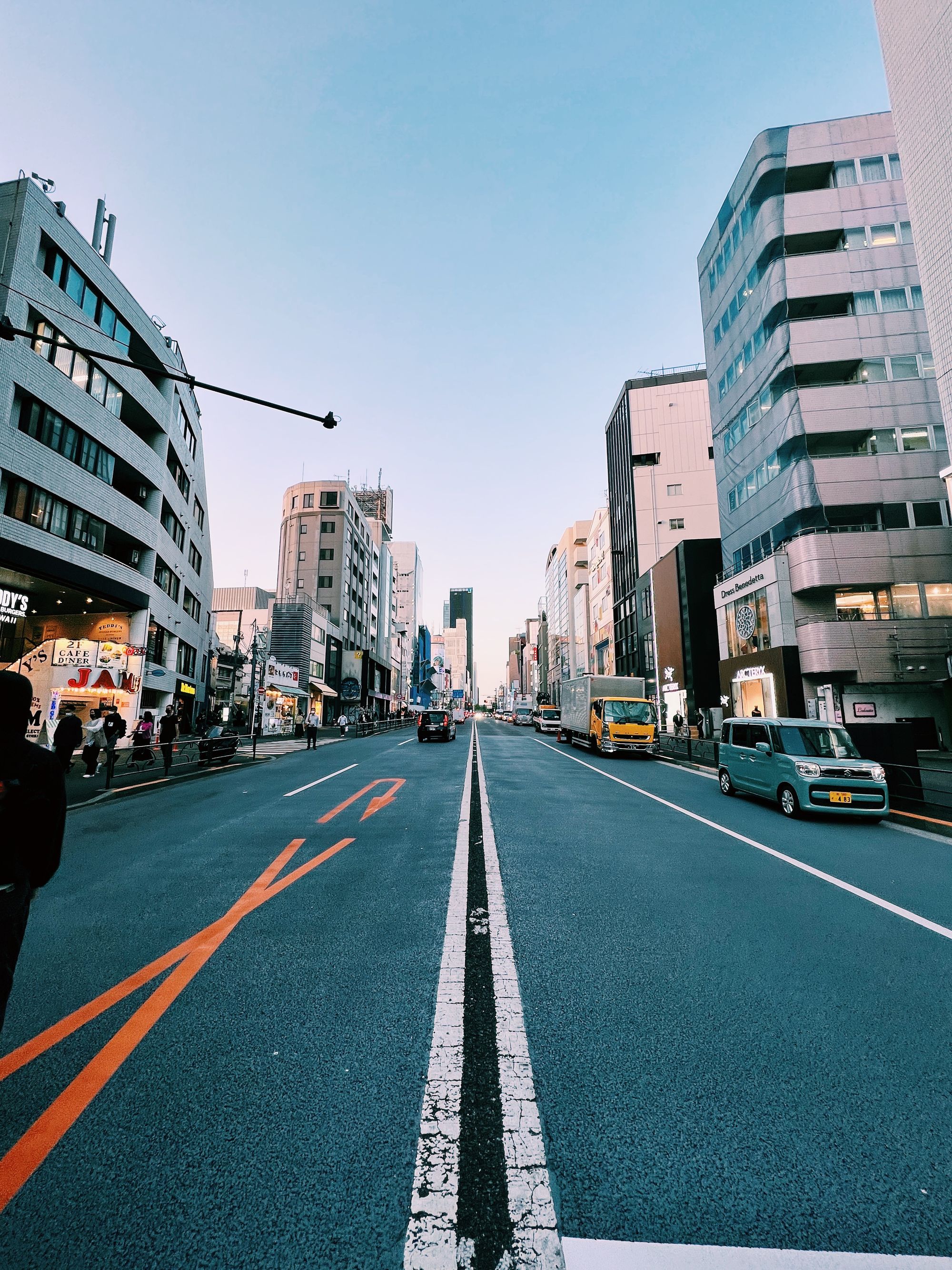
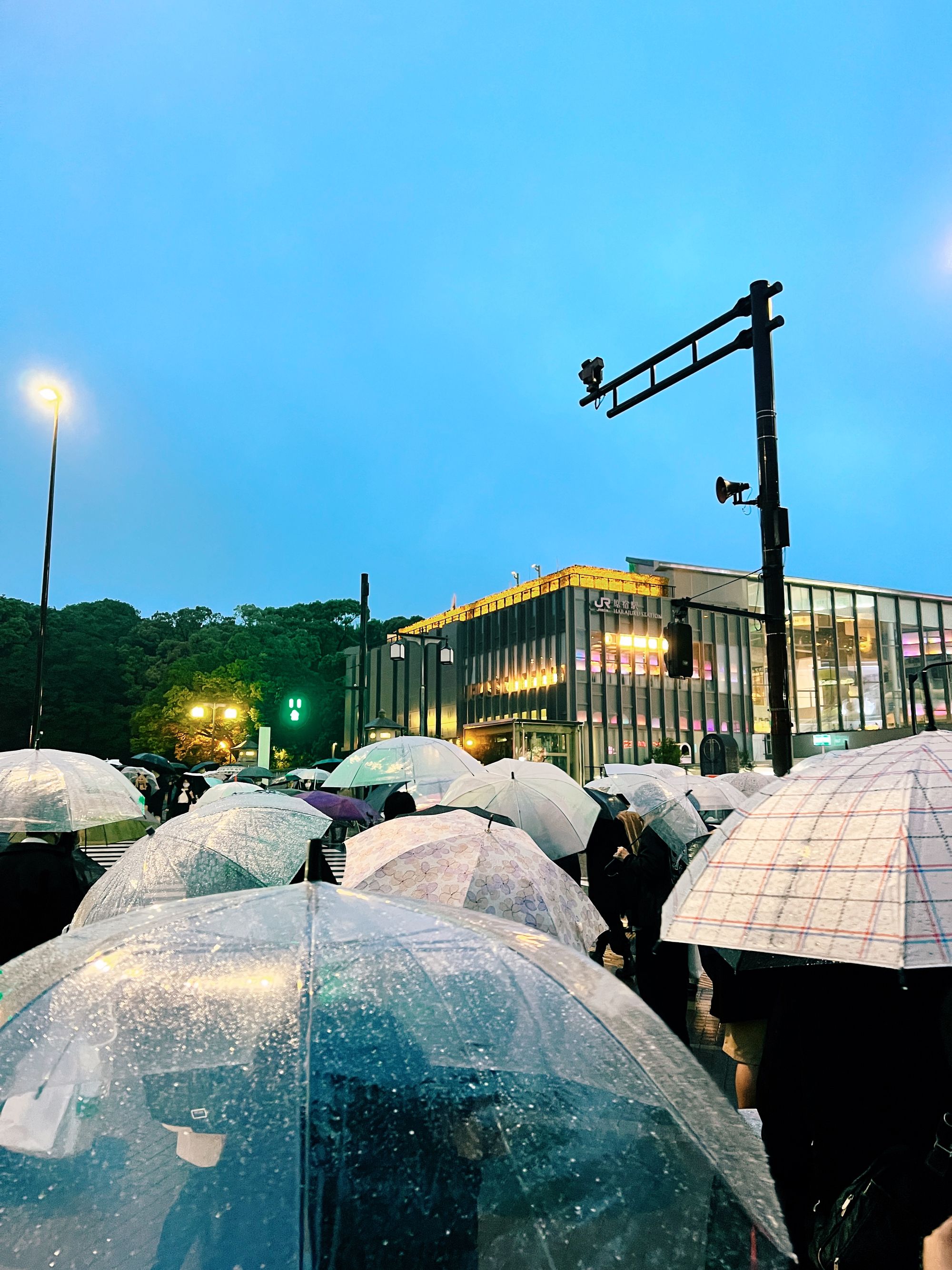
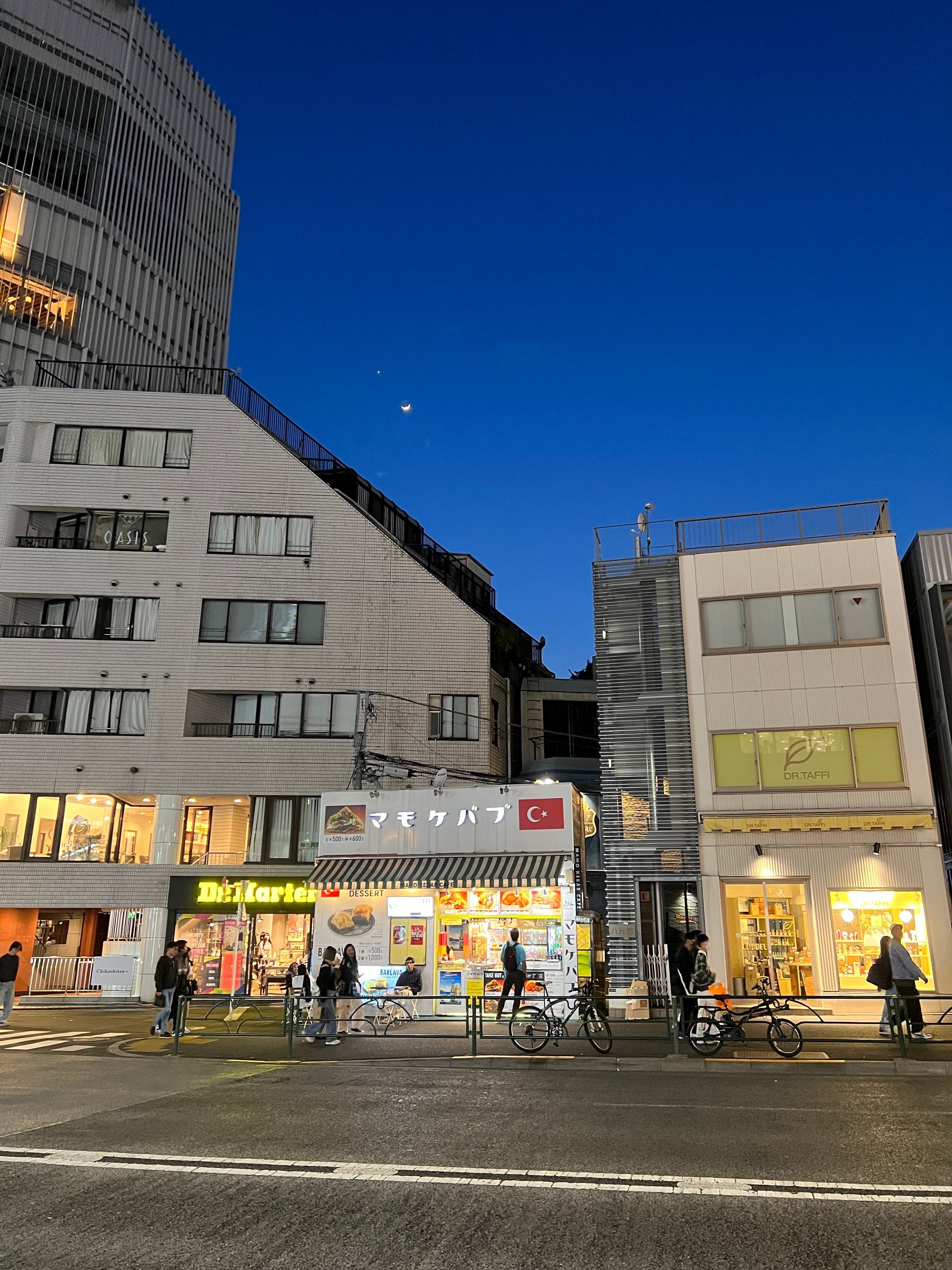
I loved coming to work in this area each day – it always felt buzzing, full of interesting people, shops, events, and things to do; a great contrast to Gotanda. From my WeWork here I could walk to all the fascinating shops in the Jingumae backstreets, to a health food store for all my gluten-free, dairy-free groceries, clothes shops, gift shops, stationary shops, the massive Yoyogi Park for a break from work and the city, a huge amount of restaurant and food options, and walking just 10min further brought me to Shibuya and everything it had to offer. Very different vibe from Gotanda, but lots of fun.
Ginza: Ginza is known for luxury fashion, shopping, fancy dining, and entertainment, and it definitely lives up to this.






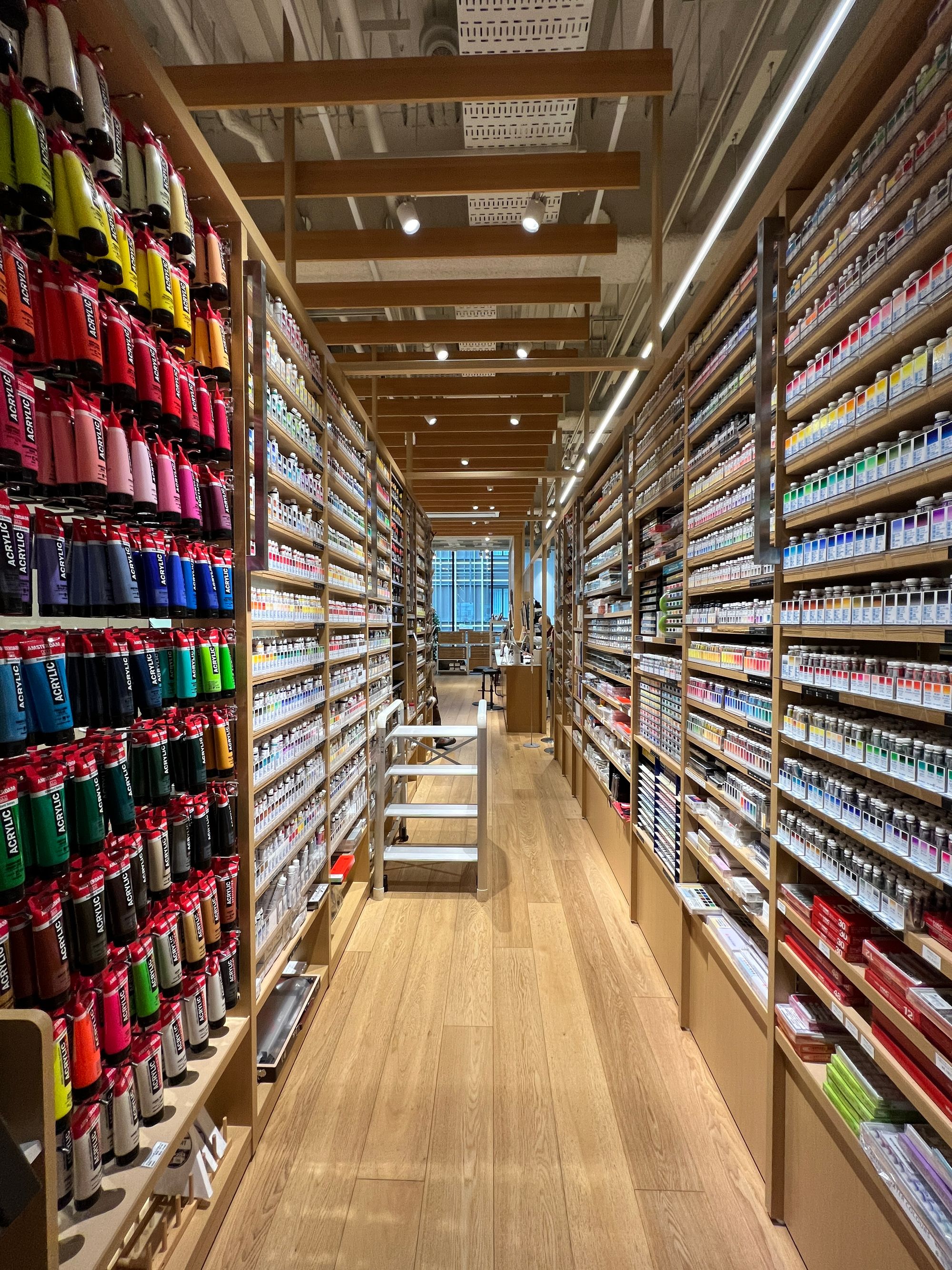
I went here a few times; once to stay at the Muji Hotel (very cool, highly recommend!), a few times to visit Itoya, an amazing stationary and craft shop, and once to visit a very cool bookshop called Tsutaya at Ginza Six (shoutout to this fantastic website for the recommendation)
Shibuya: Shibuya is right next door to Jingumae, where I was working from, so I'd often pass by before or after work.
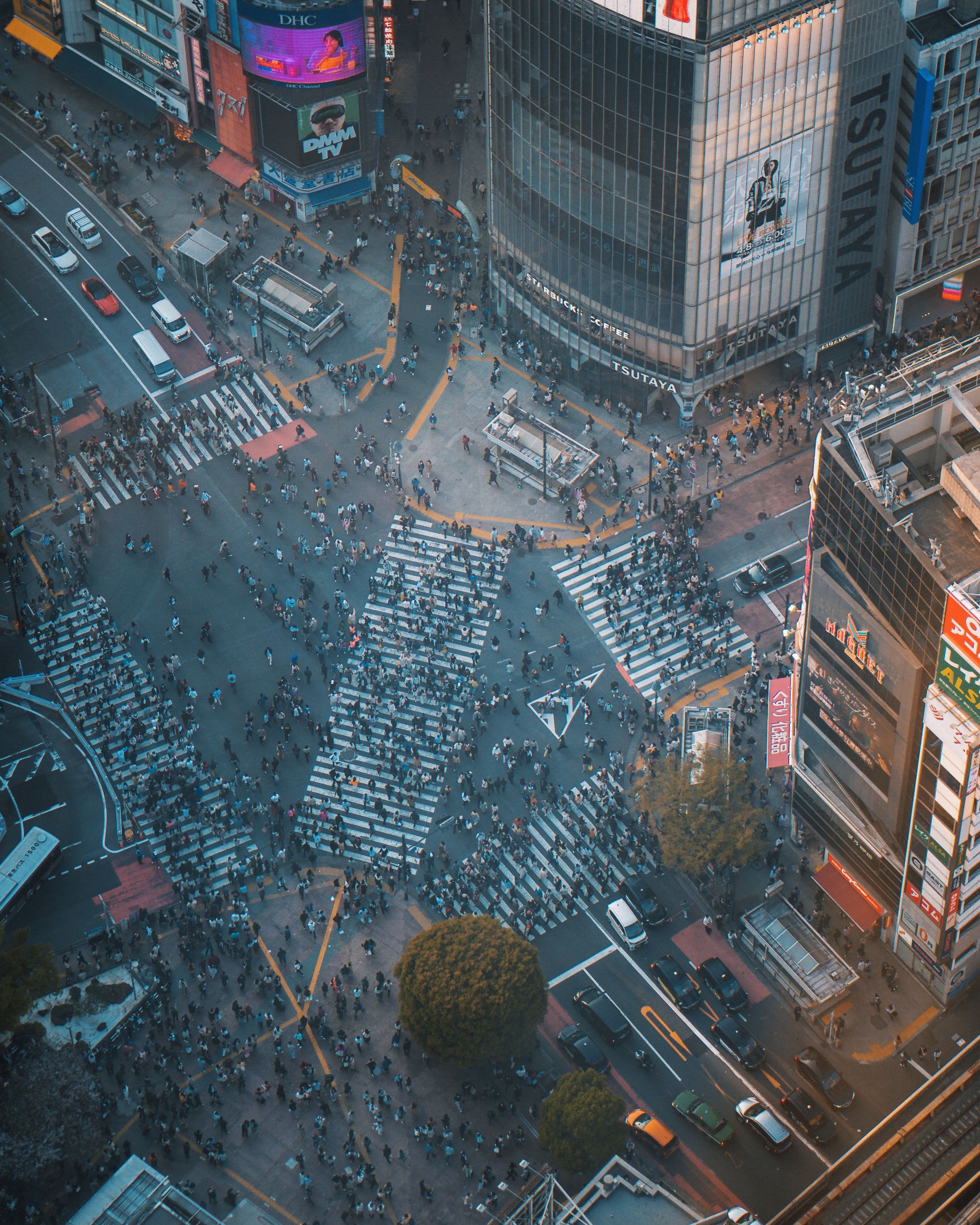
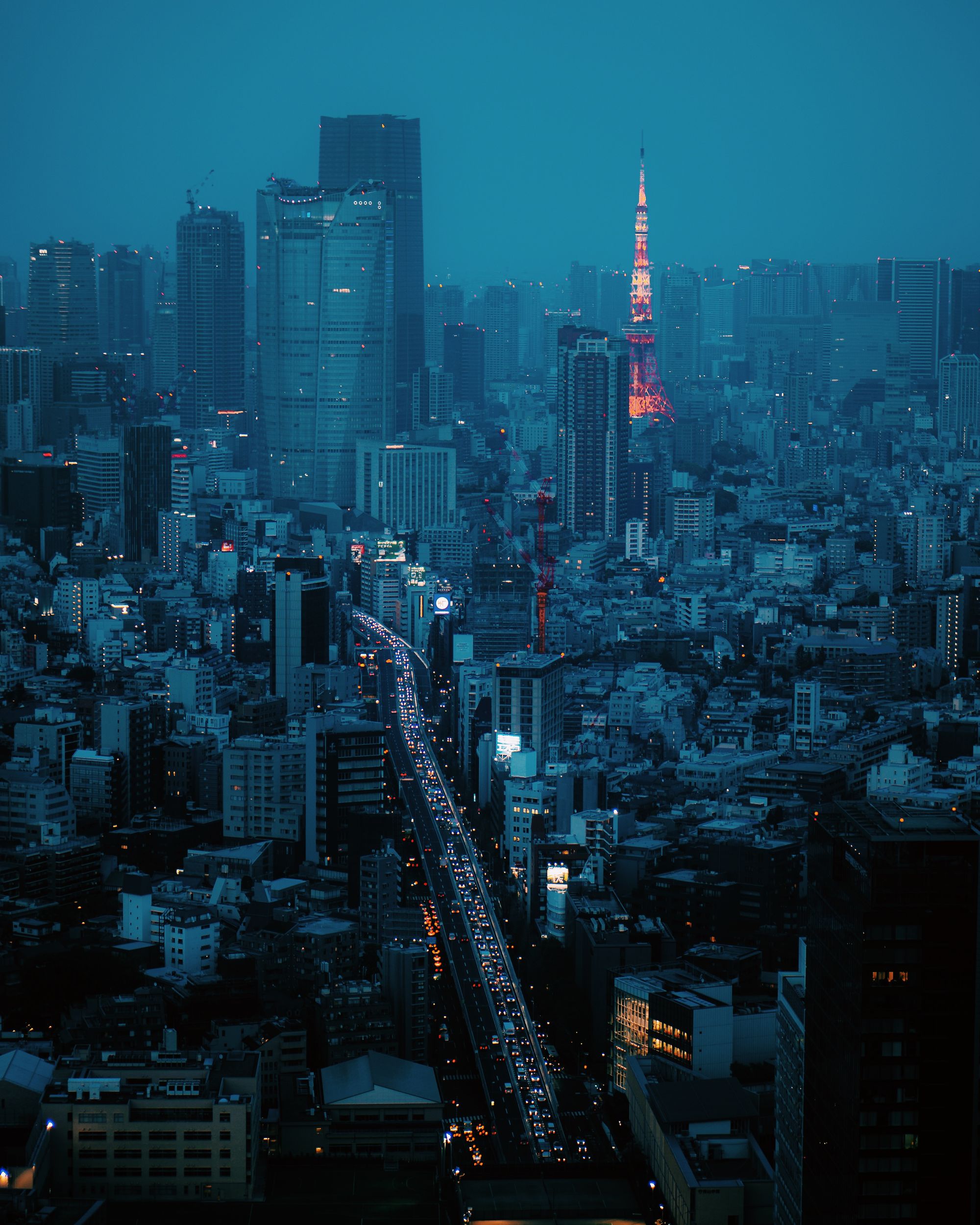
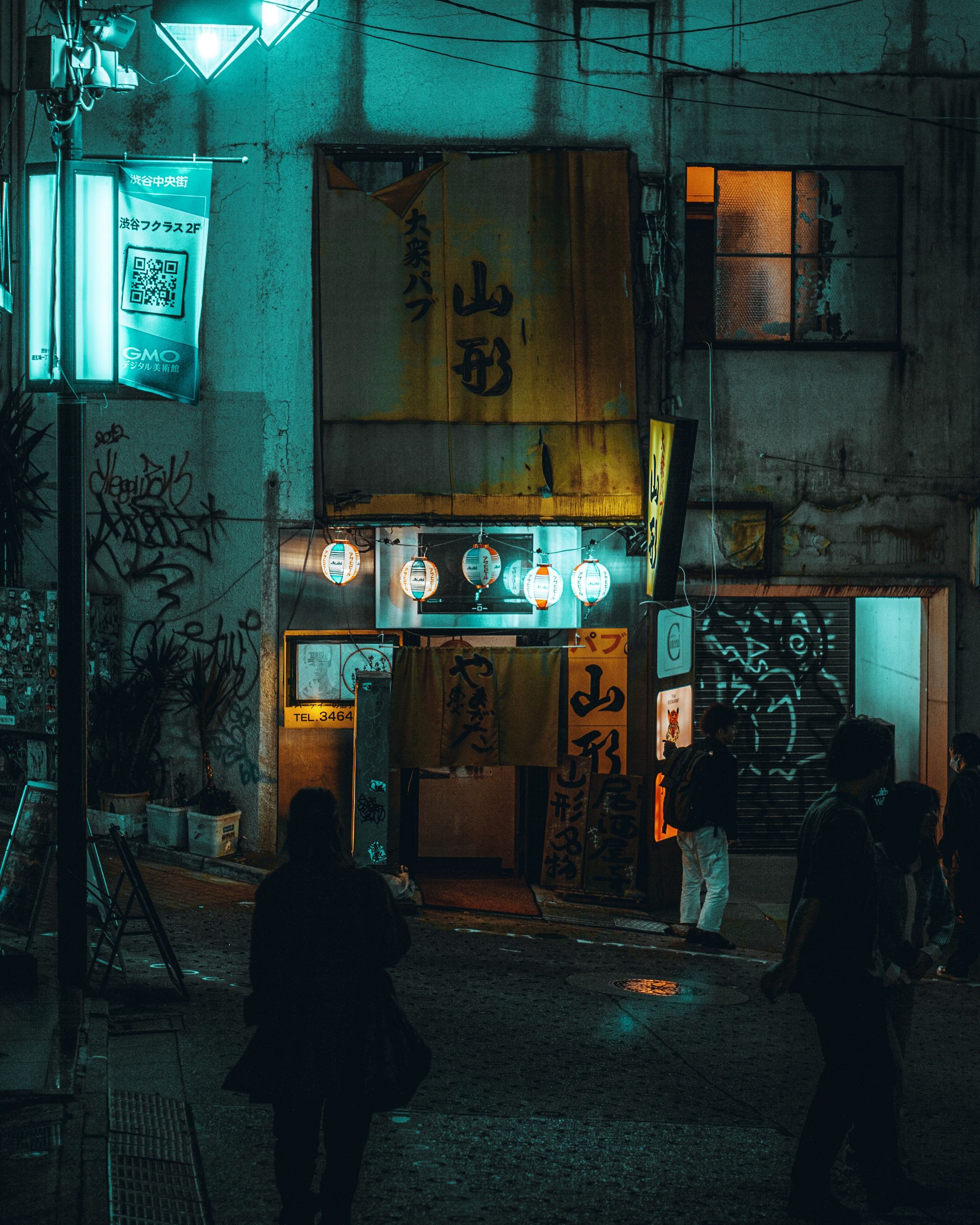
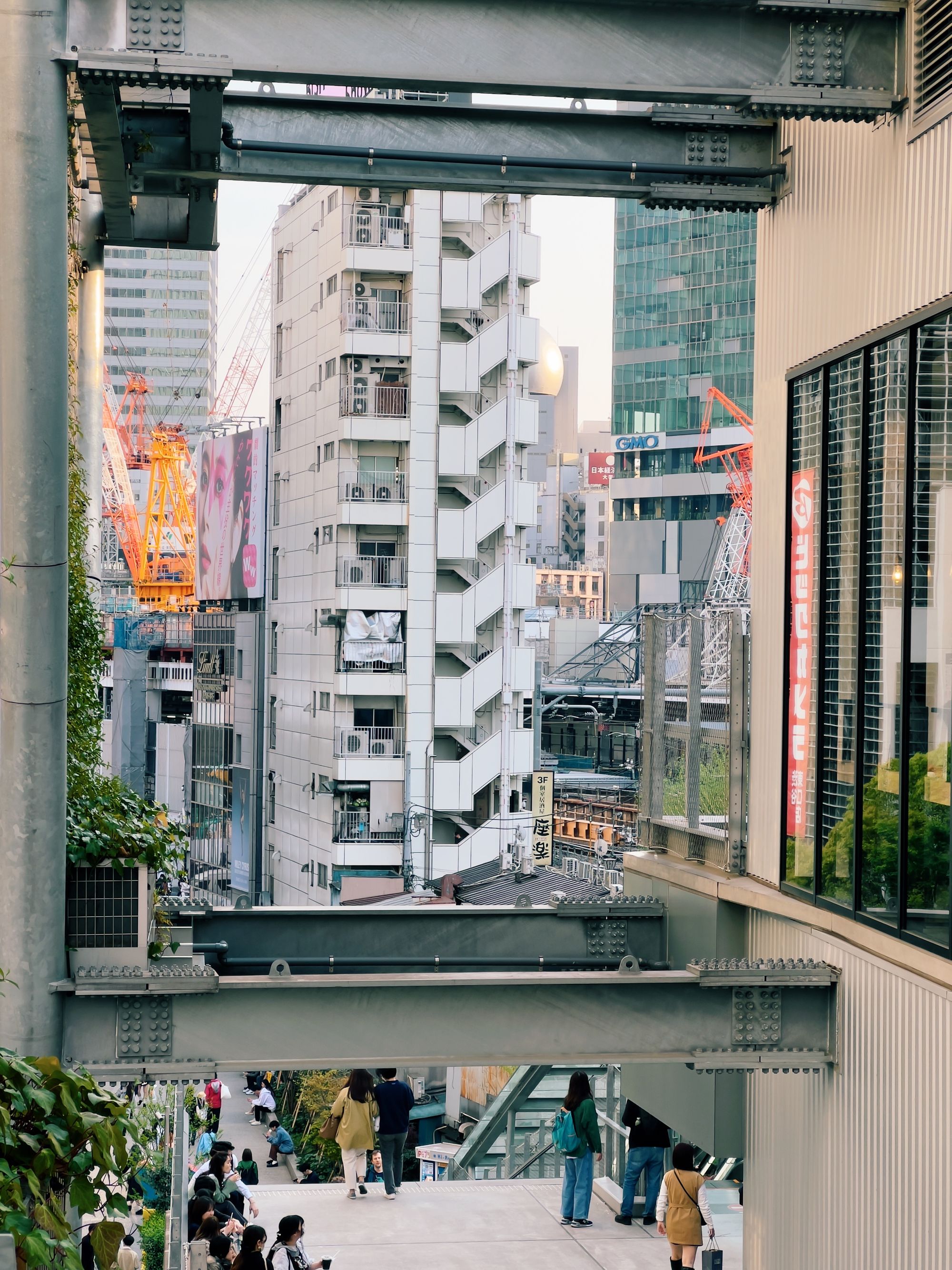
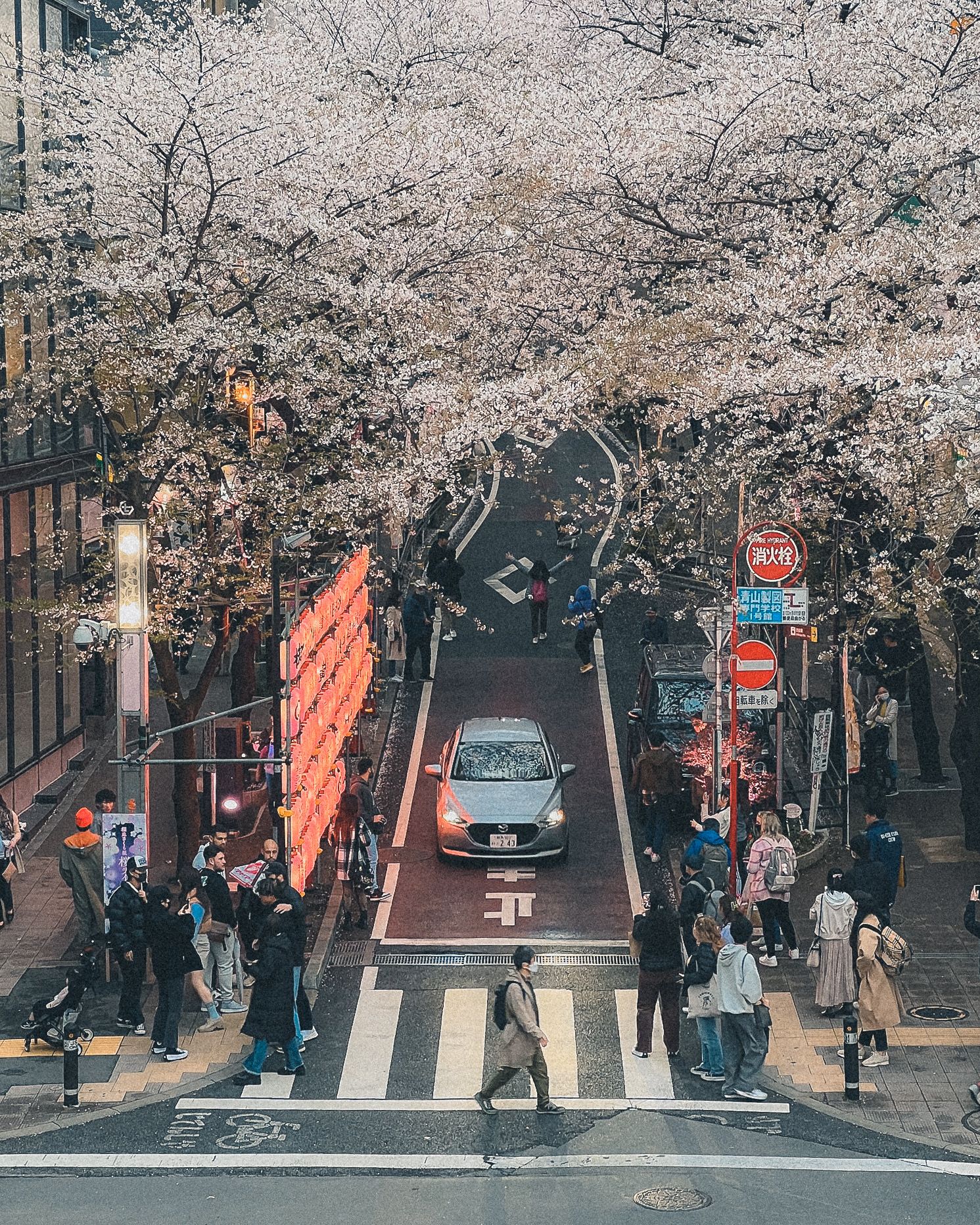
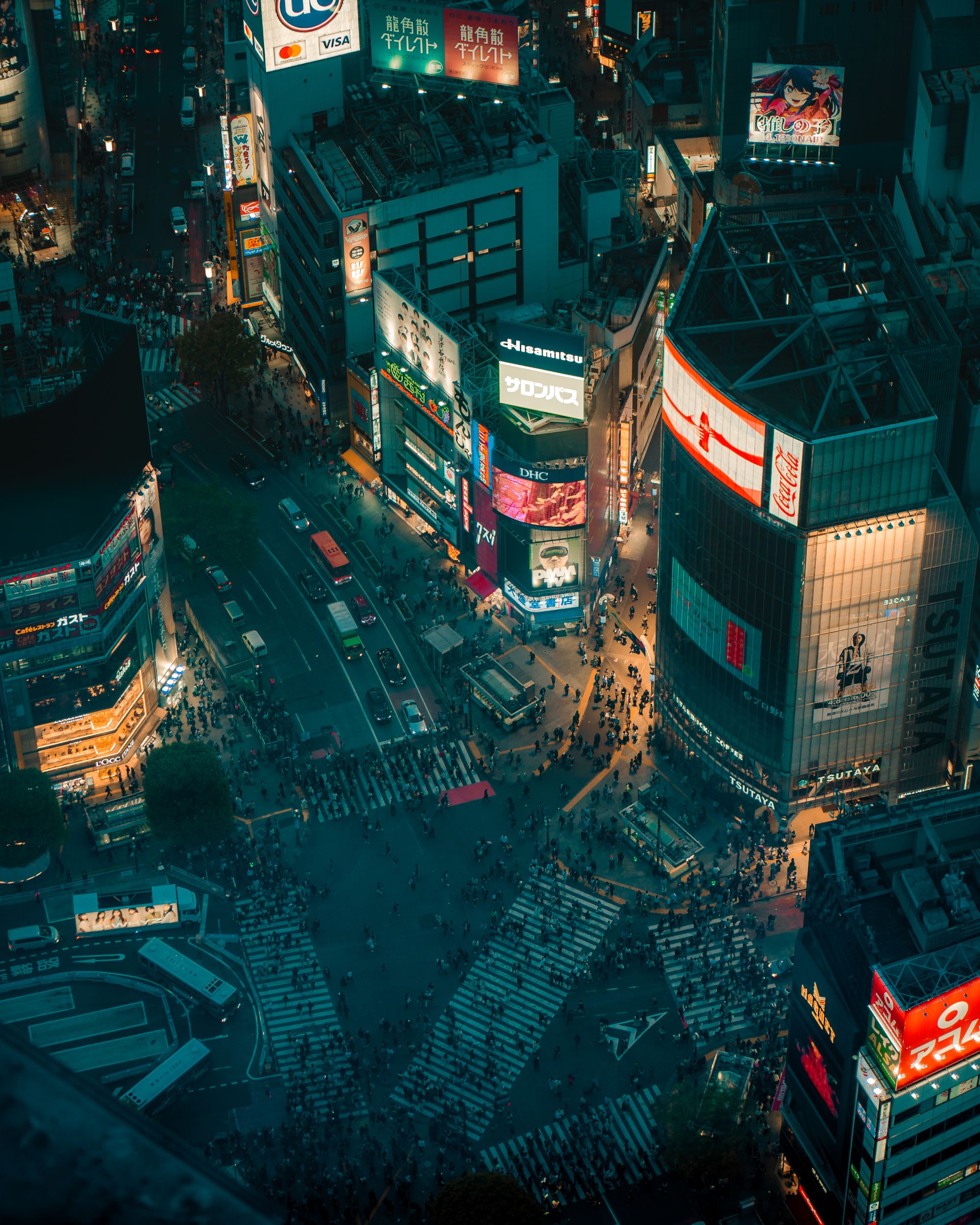


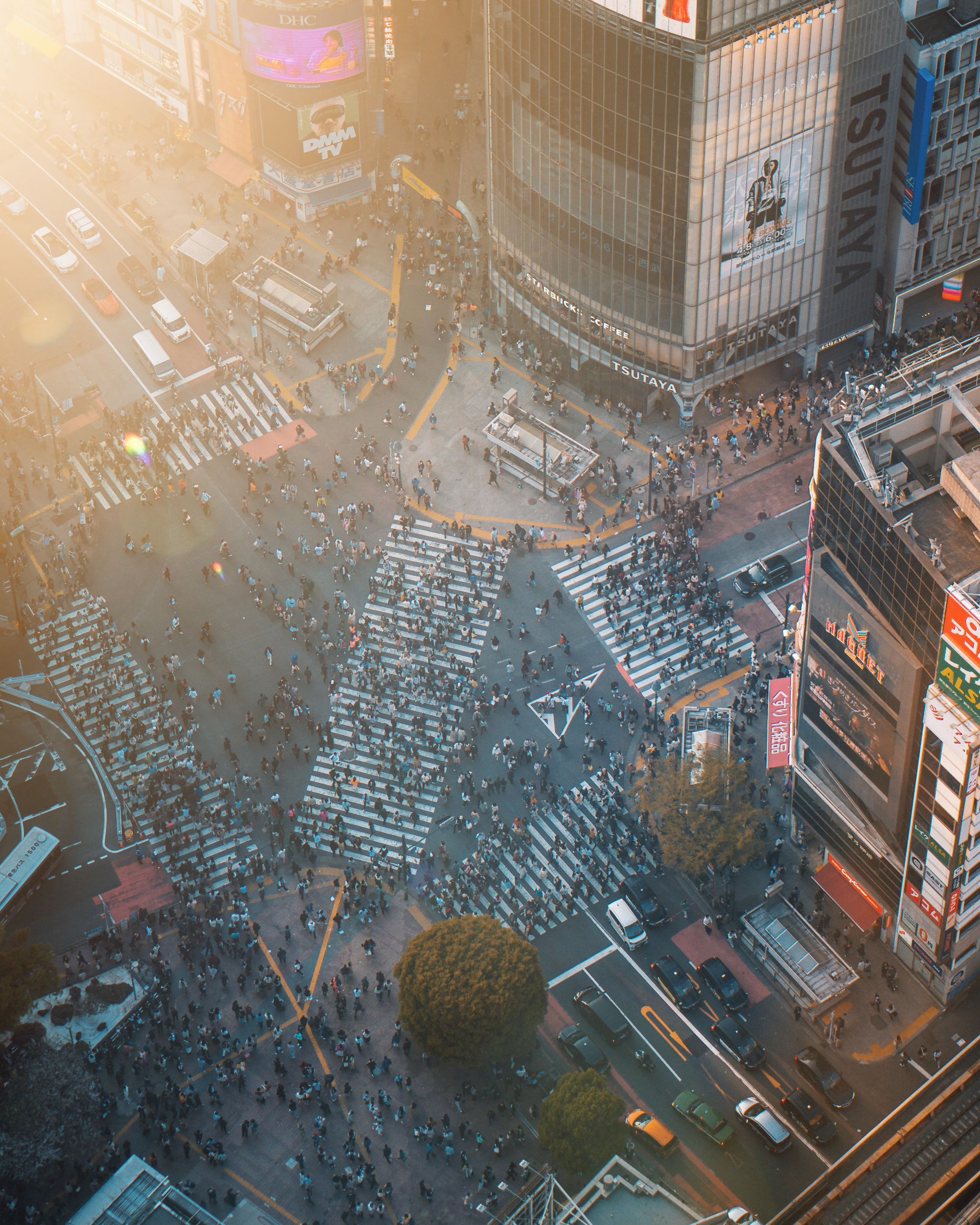
Home of the famous Shibuya Crossing and so many cool shops, sights, and venues (including Shibuya Sky where I spent an evening enjoying the view!)
Shinjuku: a bit further north is Shinjuku.
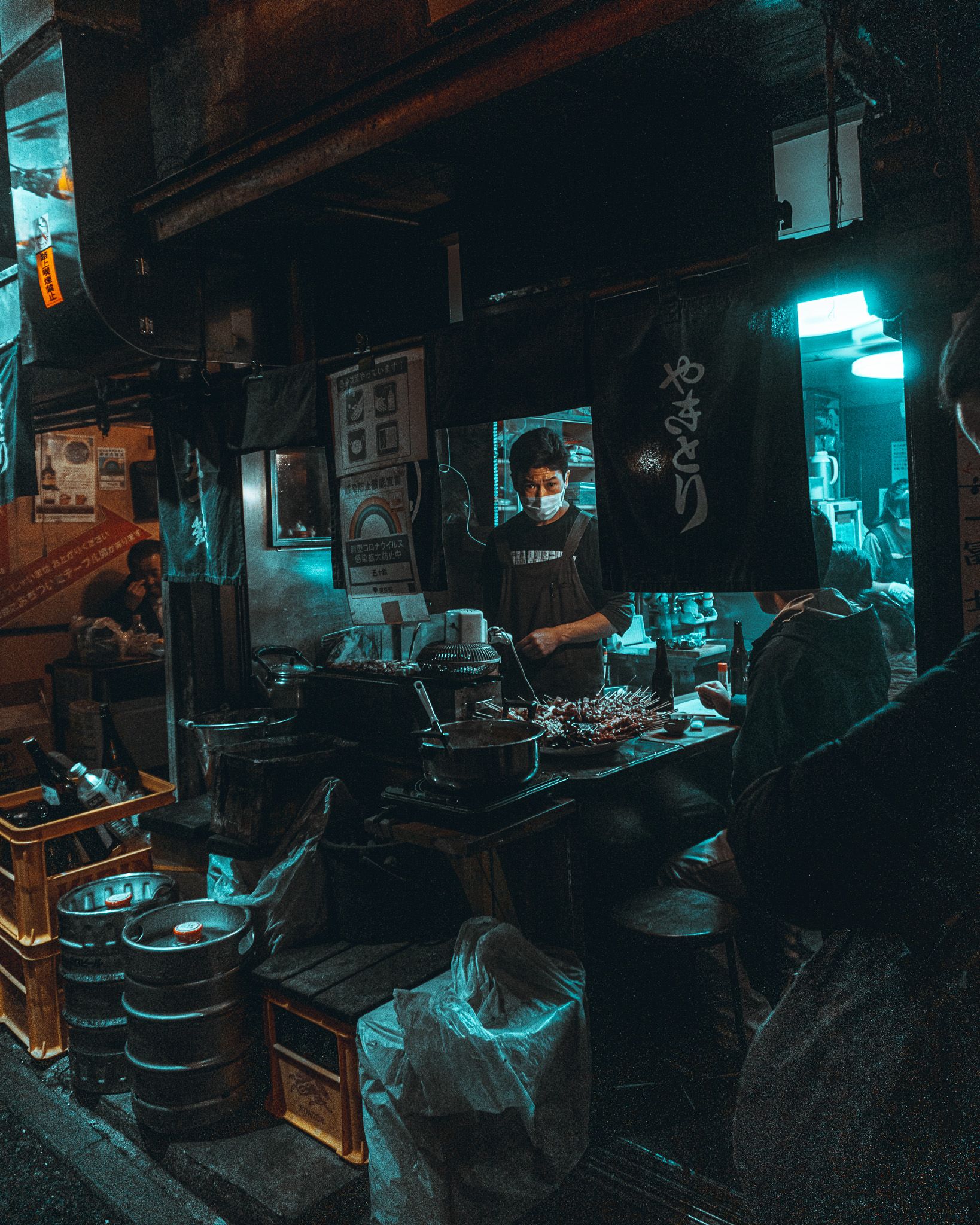
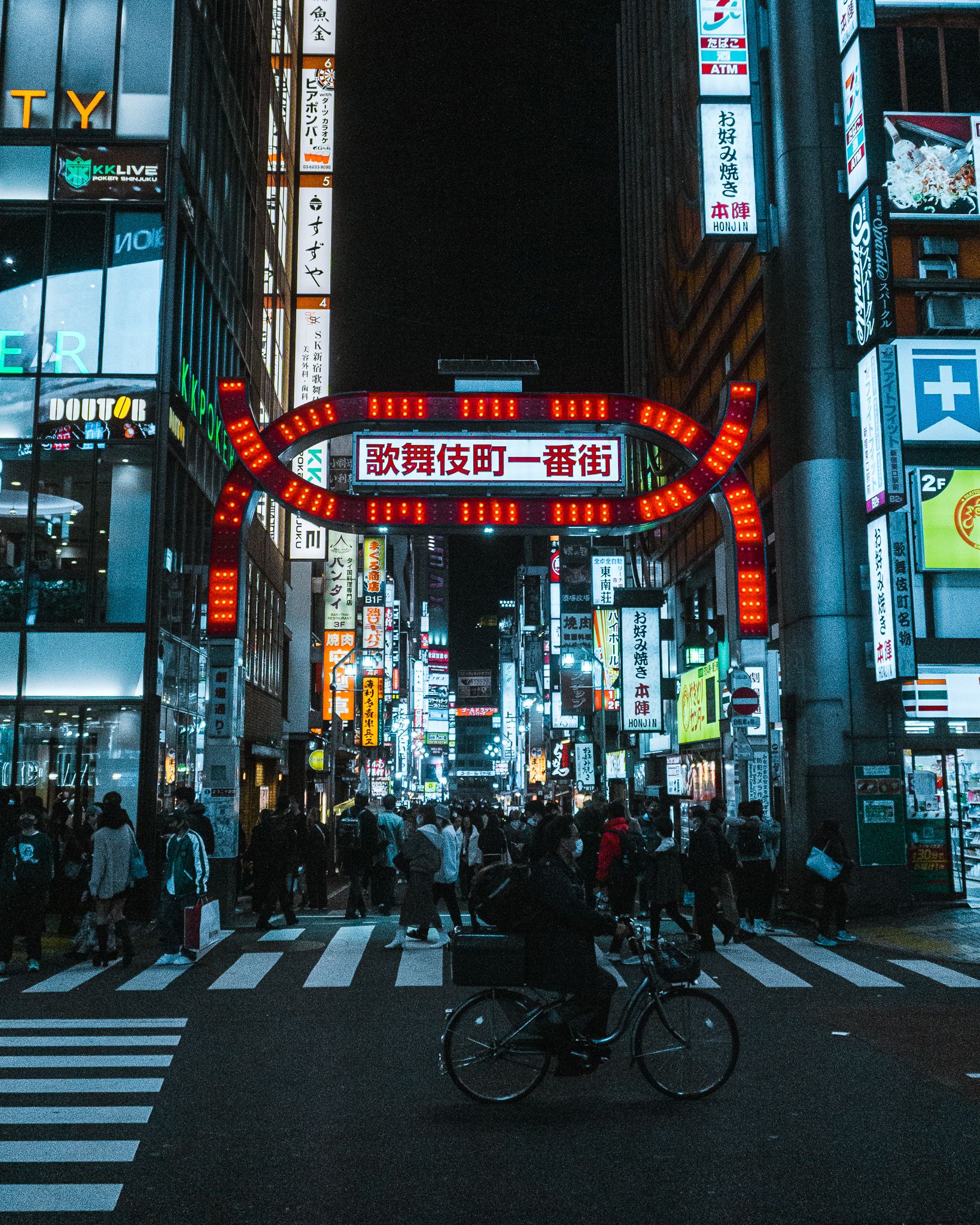
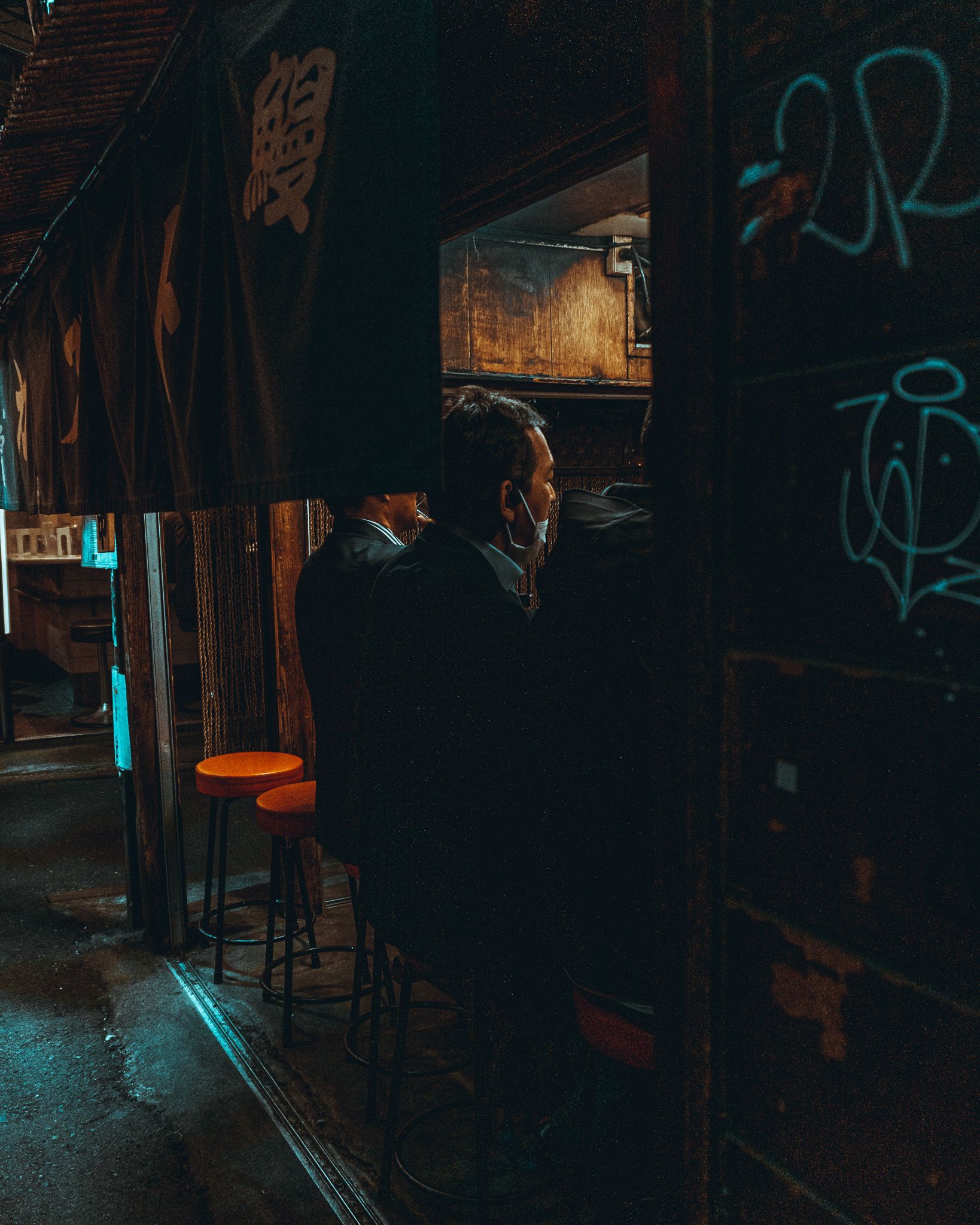
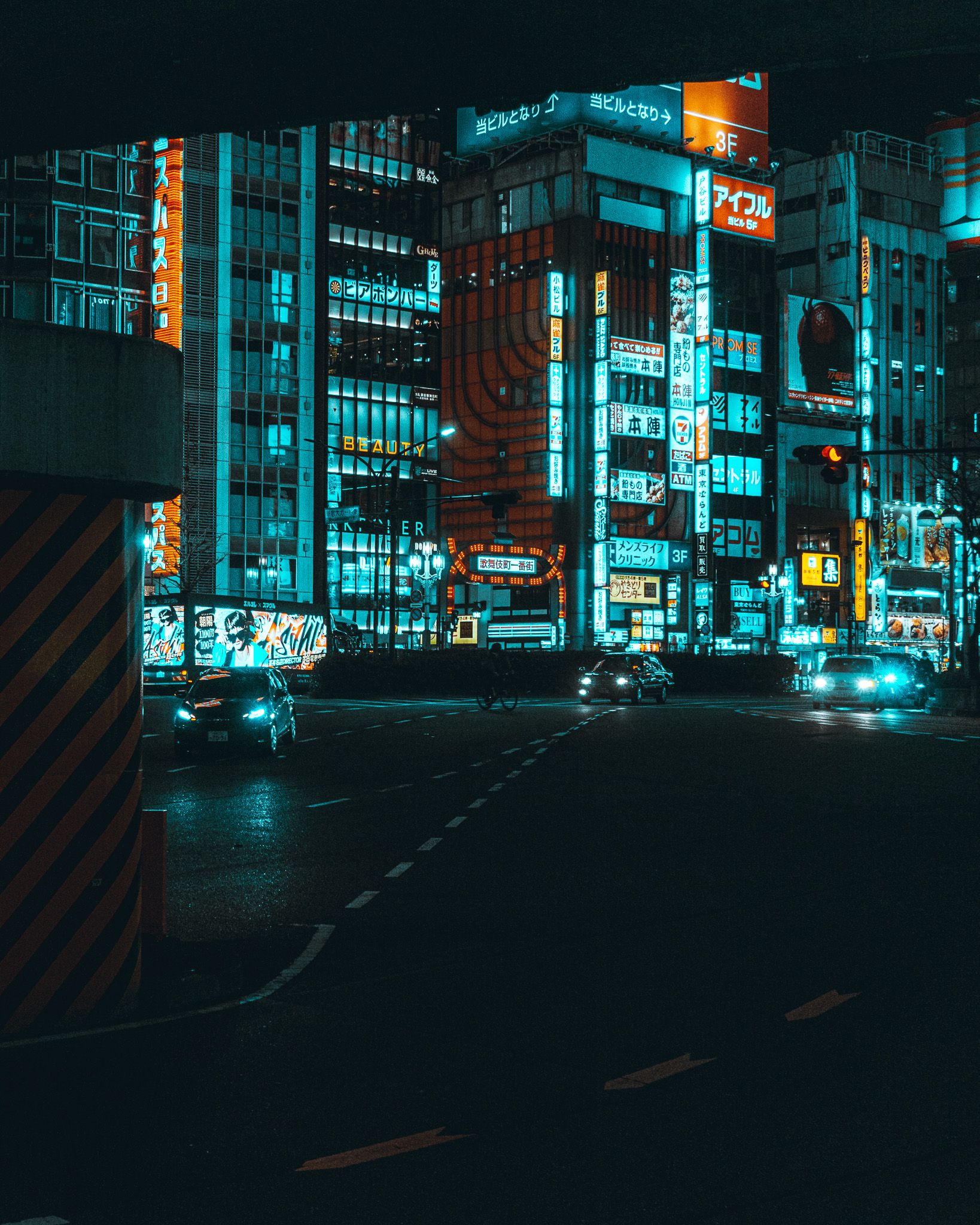
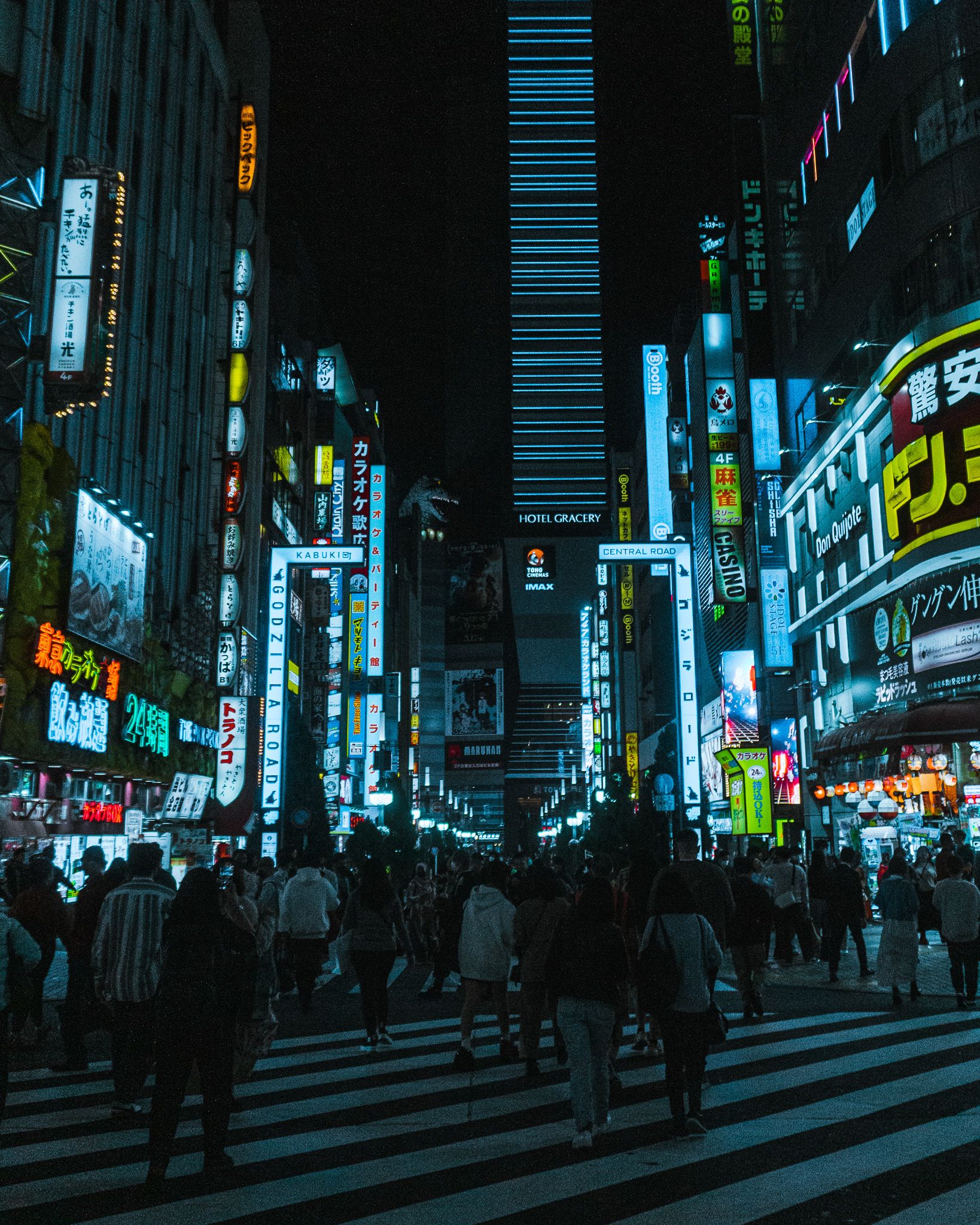
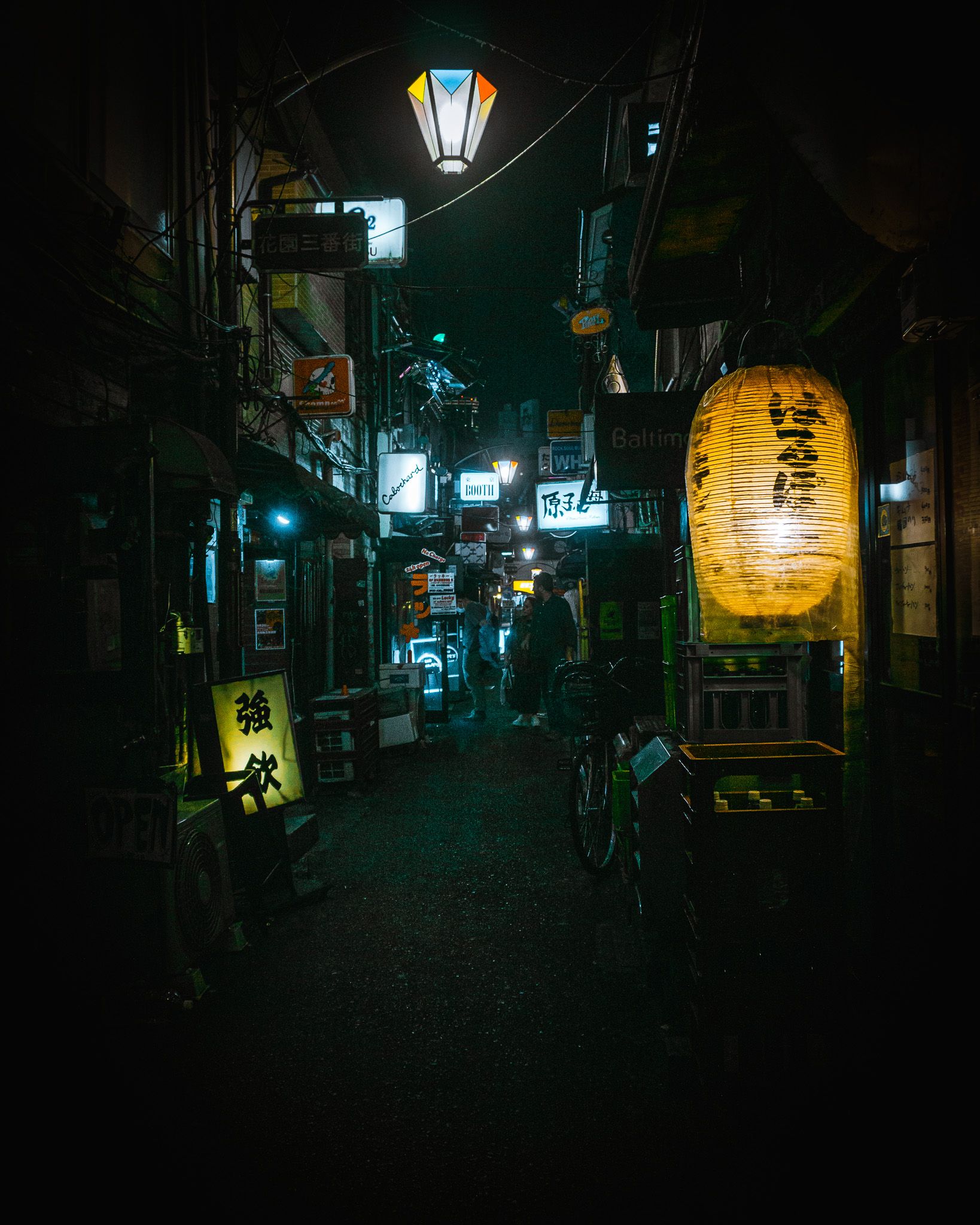
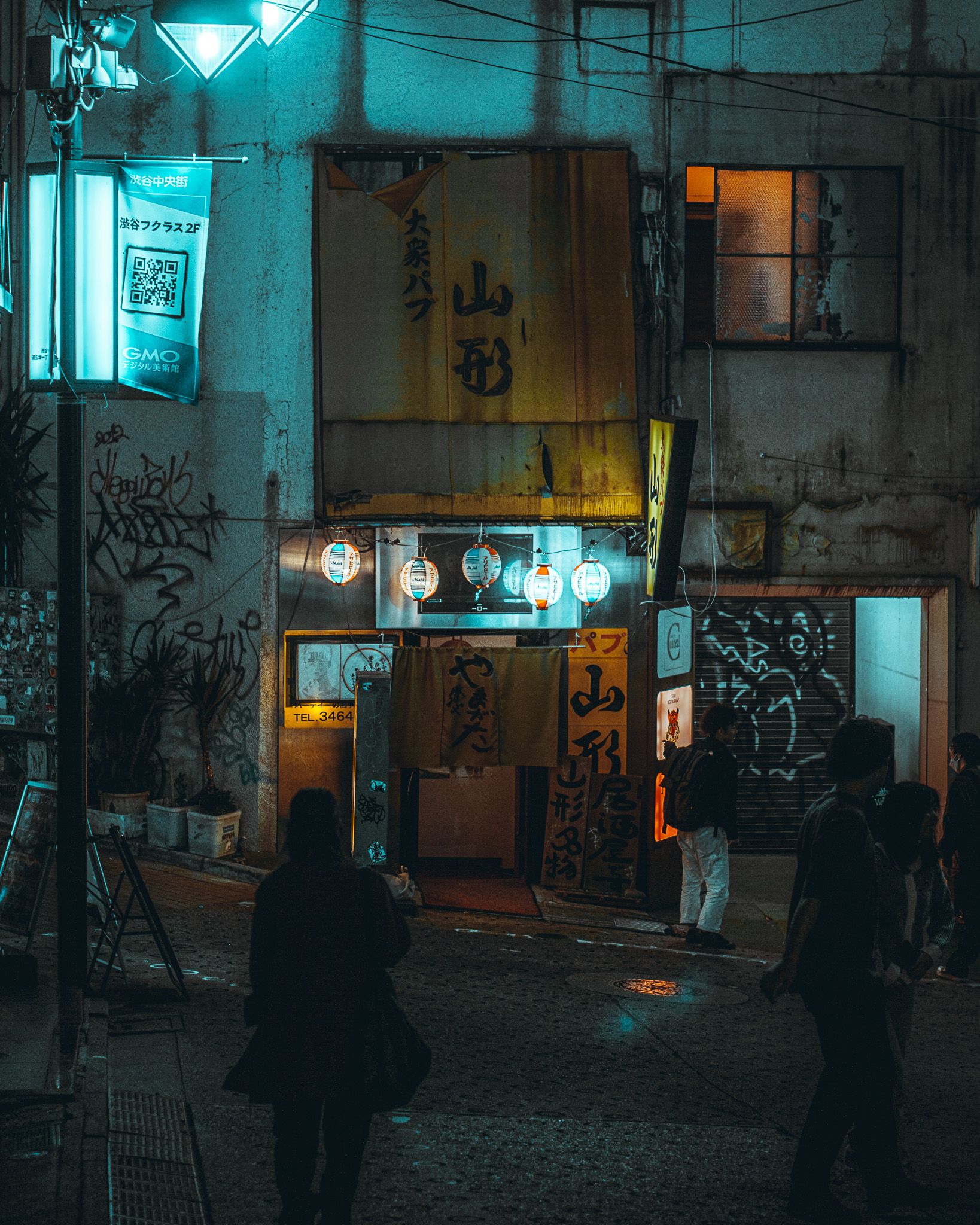
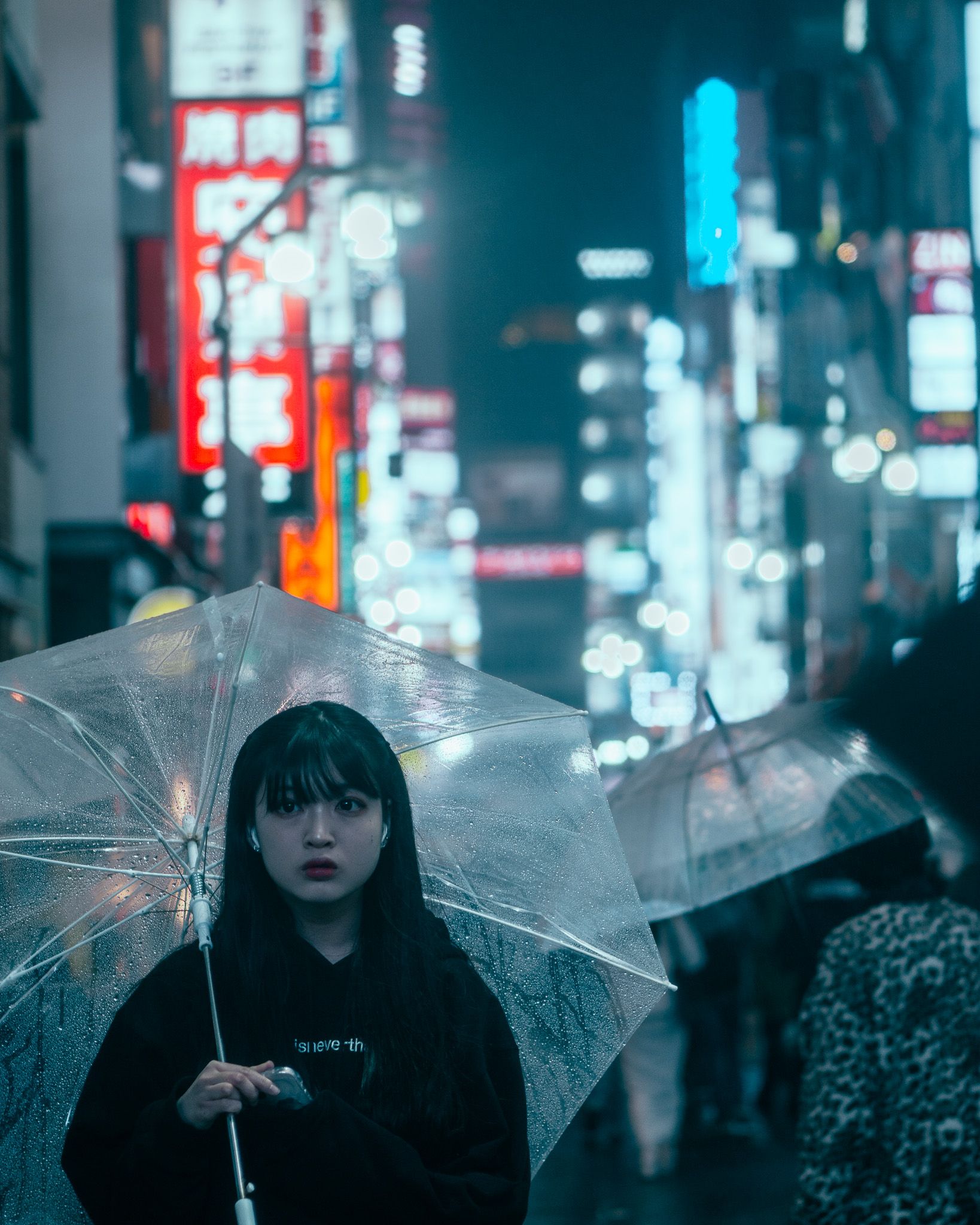
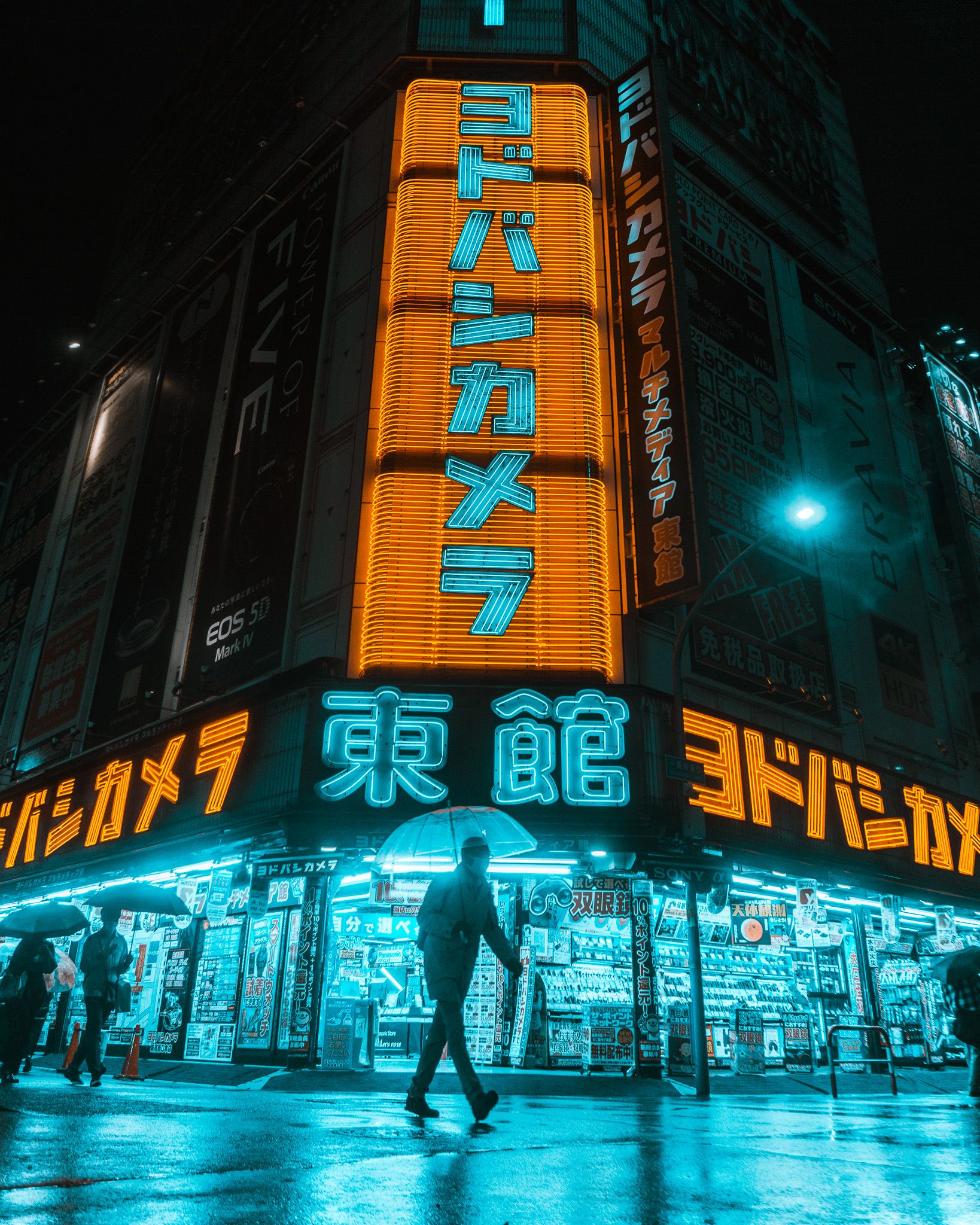
I visited here quite a few times, mostly all for photography reasons (which is why these shots look a lot more polished - Sony camera vs the iPhone for most of the others in this post!). The area is known for its nightlife and aesthetic alleys, with areas like Omoide-Yokocho and Golden Gai filled with tiny bars and izakaya, and the neon-filled Kabukicho streets.
Transport
Tokyo's public transport system is legendary, and it made my life incredibly easy. There wasn't any instance of me wanting to go somewhere, plugging the address into Google Maps, and there not being a train station within a 5 minute walk (Actually, there was one, but still, not bad!). I can't overstate how big a difference this makes to quality of life while travelling; having absolute confidence in being able to get around anywhere you want to go, with every train being consistently on time, clean, quiet, and all using the same Suica/Pasmo travel card system was wonderful.
Add to this all the train stations being meticulously clean, all the train bathrooms having heated seats, and even train stations having shops, restaurants, and konbini inside them; the whole city was set up in a way that made me never even think about driving or catching a taxi anywhere.
Google Maps also works super well for public transport directions, with specific details on what entrance/exit to access each station from, how busy each carriage was, and which carriage to ride in for the most convenient exit at my destination.
I ended up catching the train during peak hours quite often, as I went home from WeWork, and experienced that crush of people we all see on YouTube a few times. It's such an interesting experience – everyone maintains the silence and consideration of those around them when on public transport, just this time while also being absolutely smushed together. It was like everyone was pretending it wasn't happening. Wild.
Tokyo's also just started implementing shared electric scooters and bikes, but I sadly didn't have a chance to (or a need) to ever try them. Scooters still seem to be viewed as an oddity, with each scooter having its own number plate and riding on the road, but at an aggressively capped speed (elderly people on bicycles were overtaking them), but the electric bikes seemed a lot more useful and widely-used.
On the topic of bicycles, I'd never heard Tokyo mentioned as a cycling mecca, like Amsterdam for example, but it's a remarkably bike-able city. So many people taking the train everywhere, the streets being pedestrian-first rather than car-first, and cars driving carefully and not excessively fast results in it being very common to see a mother or father cycling down major roads with two child seats on the back of their bikes, even on major thoroughfares, and electric bike culture seemed to be booming. Tokyo has a VanMoof retail store, multiple shops selling Super 73s (especially around Harajuku), and when comparing the estimated travel times on Google Maps for both taking the train and cycling along the same route, the estimated travel time always seemed to come up identical. It made me wish I had my Super 73 with me, the clean roads looked so inviting! Must admit, I went on a bit of a nostalgic Super 73 spotting spree.
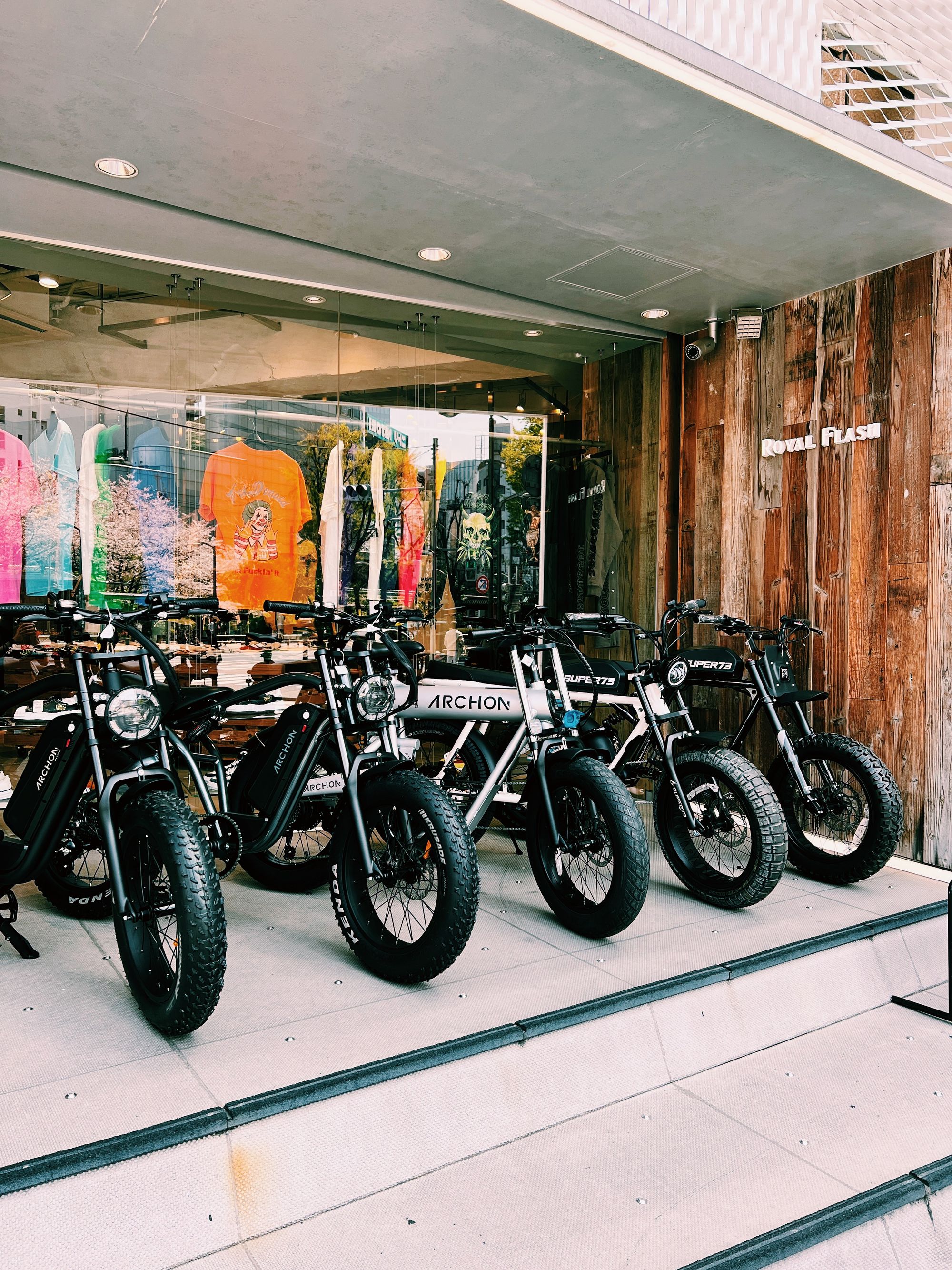








Food
Food is a tricky one to write about. On the one hand, Japan is known for having some of the most delicious food on the planet, but on the other, I'm unlucky enough to be allergic to soy, gluten, and dairy, which cuts out like 90% of Tokyo's culinary delights! So my review here won't really apply to most people, apologies for that.
So with ramen, donburi, and most meals with sauces off the menu, my plan was originally to cook for myself, and occasionally eat out at sushi or seafood places. Unfortunately, the Hmlet studio's kitchen was so small, with no counter space, that it was almost impossible to cook comfortably, and I only ended up cooking a few meals over the two months I was there.
Instead, I found a few restaurants and Uber Eats locations with a James-safe menu, and stuck with those consistently – they were probably confused at the sudden spike in orders from Gotanda over those two months! These were either seafood and sashimi, or "protein kitchens". I'd never heard of this concept, but it seemed to be really popular in Tokyo. They were restaurants specialising in simple meat, vegetable, and complex carb meals, targeted to people who are working out or with fitness goals. The meals seem to be intentionally plain, but they were exactly what I wanted; no sauces, veggies, good carbs, and inexpensive. I ate better than at home!
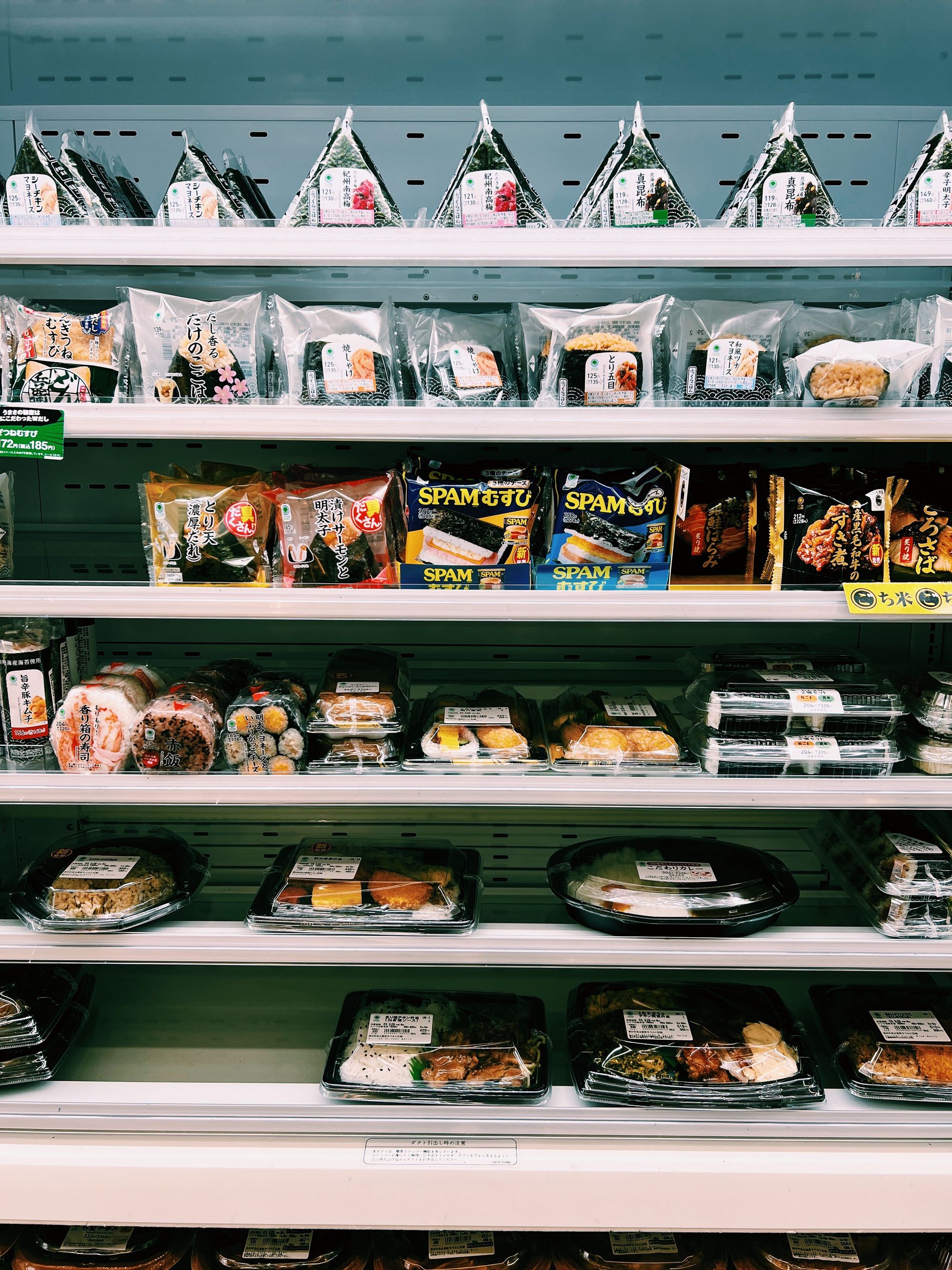



Pros & Cons
Pros
There are a bunch of things I came across in Tokyo that I wish Australia also had, and so much of it comes from amazing city planning, especially focused on the population not needing a car to function in the city. Everything has a place, everything flows seamlessly, and nothing seems unintentional. The transport system functions like a dream, convenience stores are actually convenient, and grocery stores and gyms seem to be everywhere.
This also includes vast green spaces throughout the city – especially important in such a megacity. And these parks are beautiful! Ueno and Yoyogi are standouts, and when you're in one you can't hear the noise of the city, you often can't even see the surrounding city. It's just greenery, quiet, and calm. The roads are clean, wide, and safe for cyclists due to less car traffic (thanks to amazing public transport), and every train station within the city had bathrooms and surrounding shops.
The city feels comfortable, safe, and built for humans rather than cars or big businesses. It feels welcoming to walk around in, a stark contrast to a lot of areas of Sydney where footpaths are super narrow alongside fast-moving traffic. Even on main roads, Tokyo often adds a fence between the road and the footpath, and the footpath itself is always much wider than I'm used to in Sydney.
Garbage rooms! Instead of gross, smelly bins for each apartment, every building seems to have a dedicated room for garbage, with everything sorted by residents and stacked in a tidy, clean way. The underlying assumption of public space being communally cared for and looked after, even with dedicated people employed in each area, impacts so much of why Japanese life is pleasurable. Everyone keeps everything clean and tidy as everyone has to live there. It makes sense.


Another definite pro is the simple aesthetic appeal – it's an ideal city for photographers. The light just seems to hit different, and the intention with which buildings, nature, and streets all coexist means visually stunning photo ops at every corner.
As someone with a digestive-related autoimmune disease, one of my favourite things about Tokyo was the cleanliness, and availability, of public bathrooms – including heated toilet seats! In train station bathrooms! HEATED!
Okay this one is a tiny thing but something I really liked; kairo heat packs. These are small pouches filled with metal filings that generate heat through oxidation for up to 24 hours. They're amazing for cold mornings, snow days, or muscle pain after working out. Much more convenient than a heavy heat pack.
For digital nomads, the abundance of WeWorks and other co-working spaces is another big plus. There are so many spread out across different locations throughout Tokyo, with each neighbourhood's providing a unique atmosphere and personality, which then impacts the type of people you'll be working with, so it's easy to find one or two where you feel most at home. Not only did they give a great place to work from, but they also served as ideal based from which to explore all the diverse different areas of Tokyo.
Cons
Okay, before the cons, please remember these are just my own personal experience, and some of these might be entirely irrelavent due to your own requirements or expectations.
Firstly, Tokyo isn't the best place for those with food allergies, especially gluten and soy. This sounds pretty obvious, as so much Japanese food is soy-based, but it was a big part of my time there so I'm mentioning it. Many Japanese restaurants either don't understand or don't cater to allergies like these (dairy and nuts seem a lot more understood). I'm also always hesitant to ask for meal modifications in restaurants to avoid causing offence to the chef! This is an instance where being able to speak Japanese and clearly communicate what you need would be very useful.
Hmm as I type this I'm realising all my cons seem to be food-related! This one is about bread. Coming from Australia, toast and sandwiches are a big part of my standard diet, however bread isn't really a thing here, and if it is, it's eaten primarily as a dessert. It's often sweetened, in small loaves, or just not really available. This isn't really a con as much as just a unique part of a different country and culture, but definitely something to keep in mind before heading over if you're also addicted to peanut butter toast.
Here's another food-related one. If you stay in a 1 bedroom apartment, odds are your kitchen is going to be either non-existent, or so small as to be almost unusable. I tried cooking a few meals, but the lack of counter space had me balancing prep dishes on my desk in the next room while cooking, and I soon gave up and relied on delivery or restaurants for my time there.
Cost of Living
I'm looking at this from a Sydney perspective, but the cost of living was very manageable! Food prices were reasonable, including takeaways and grocery shopping. Konbini had pretty much all daily essentials, including healthy snacks, and there weren't really any big surprises when it came to costs. Rent at Hmlet was also great for the proximity to the city, when comparing it to my rent back in Sydney.
Socialising & Support Network
Most of my socialising and meeting people was done through either WeWork, or training at the local gymnastics club. A lot of the people working in the co-working spaces spoke English or were bilingual, and often worked in similar fields to me, which was great.
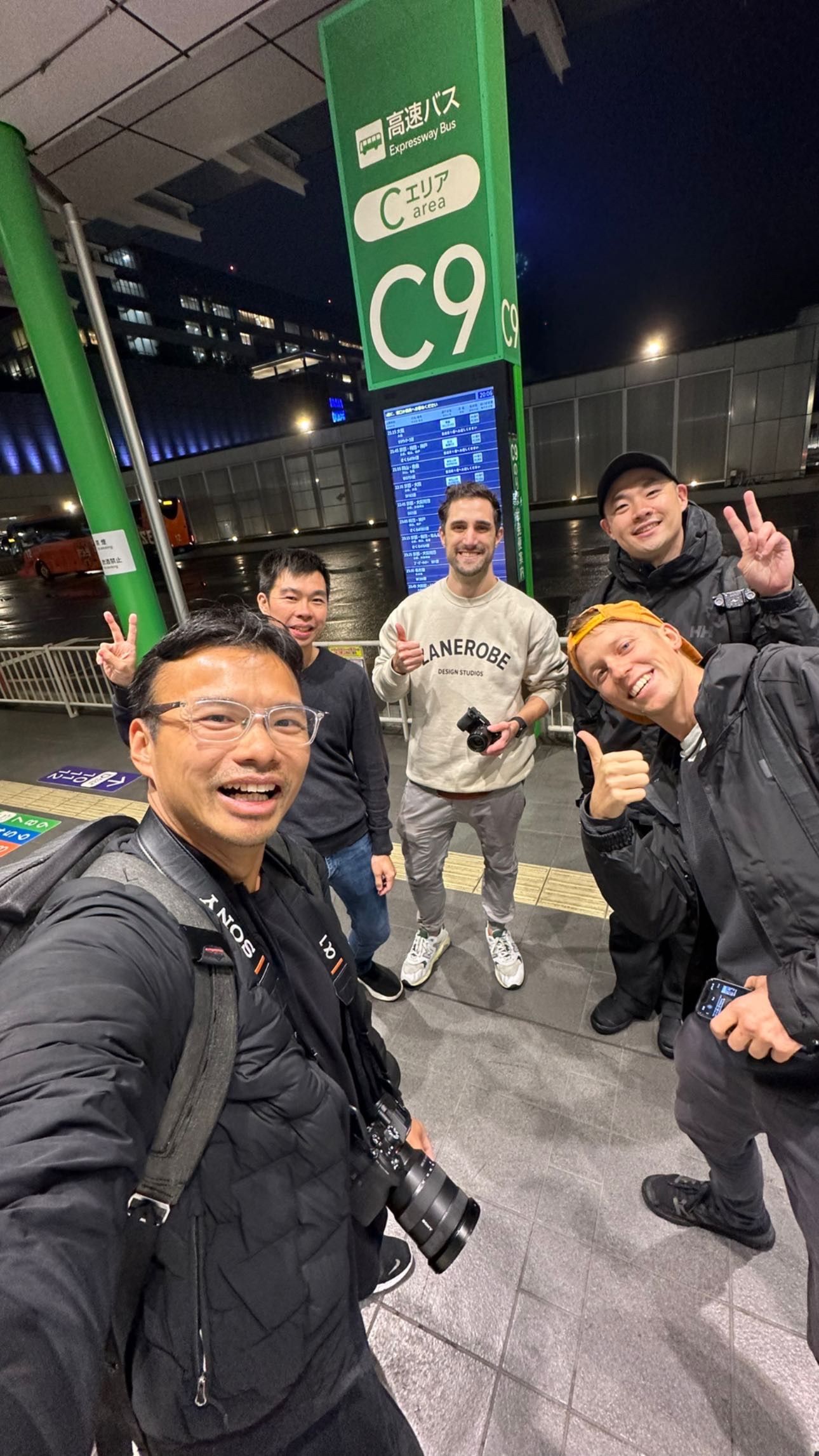
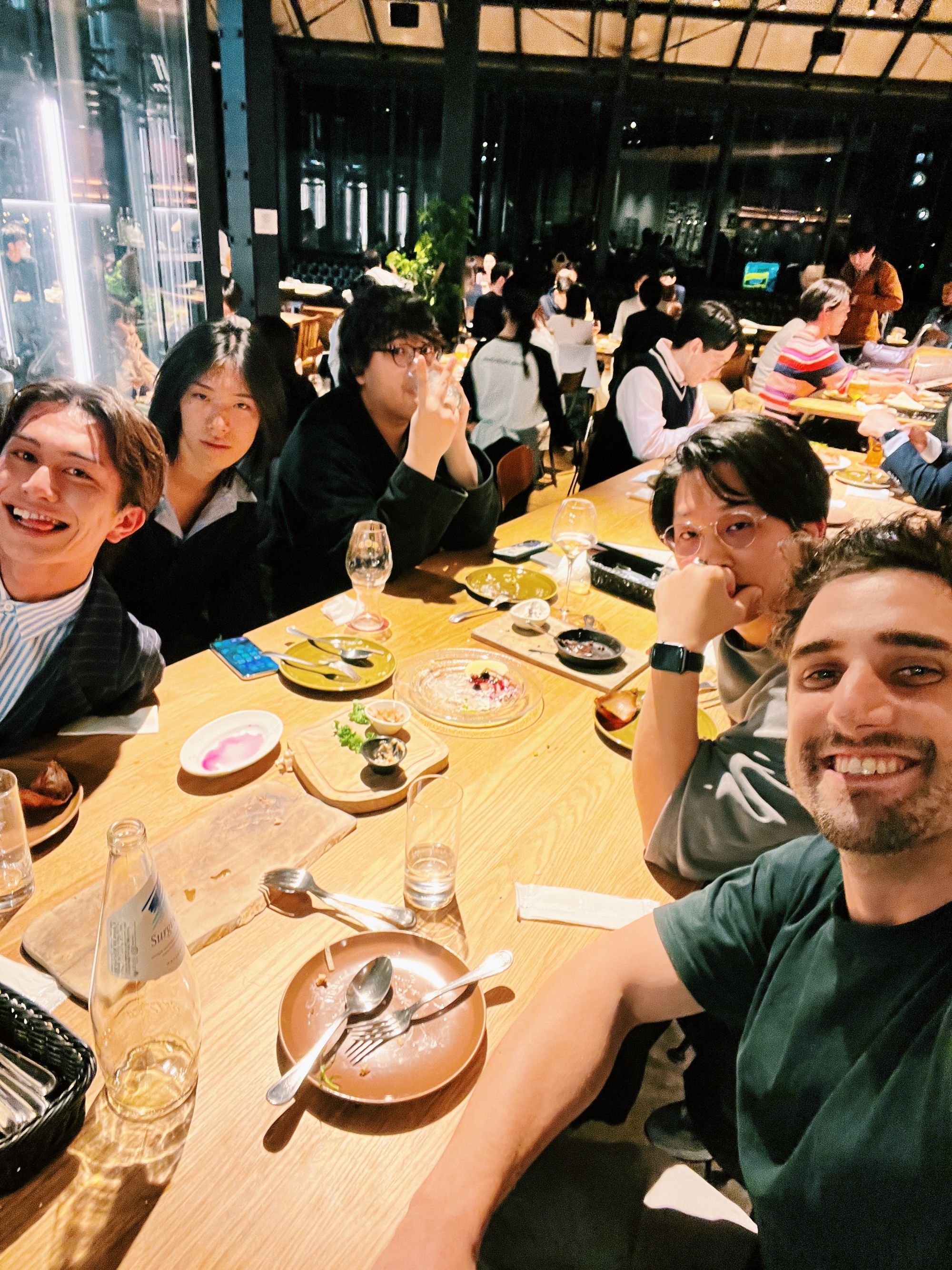


Outside of this, I was also lucky enough to have a Japanese friend living in Tokyo who introduced me to his circle, who were all great people. Coincidentally, a photographer friend from Sydney was visiting Tokyo during my stay, with a bunch of other travelling photographers, so we explored together a few times with our cameras.
Balancing Work & Play
Staying Productive
Routines! Routines are the best! Seriously, a consistent routine is your absolute best friend when it comes to productivity, mental health, happiness, physical health, and relaxing – especially when you're on the other side of the world.
This means setting start and finishing time for your work "day", whatever form those hours take. This ensures you have dedicated time to actually get your work done, but also means you're not working constantly, day and night.
This is related to designating a specific space for where you work, and another for relaxing. I don't recommend working in your apartment (especially while travelling as your room is likely going to be small!), and this is why I love co-working spaces so much. They offer a change of scenery, they give you a clear delineation between work and home, and also give you that sense of community often missed in remote work.
This strategy is also important when it comes to hobbies and things for fun! Scheduling time to relax, time to spend on hobbies, time to work out etc., means you can stop worrying about everything you need to do, and just trust your schedule, knowing everything has its place.
It's also important to make sure that your work doesn't suffer while traveling and routines are key with this. If you know that all your non-work things, like hobbies and seeing friends, have a spot, that means you can just 100% focus on work when it is work time.
The bulk of every business day is still a work day. You may be traveling in an different part of the world, but you're still working full-time – more than full-time if you're the founder of a company or an indie hacker! Setting these non-negotiables allow your life to actually function. That time is locked in, it doesn't change. And it's because it's locked in, it doesn't change, that it allows for everything else to happen. For this traveling to happen. For the time to see friends to happen. For the business growth to happen.
Making time for sightseeing, day trips, and other activities
On the flip side, you still need to enjoy being in other parts of the world! However you work out your work days vs your relaxation days, don't compromise and try to do both at the same time. For me, due to working with coworkers' schedules around the world, this means weekdays are for work, and weekends are for exploring and being a tourist. I very, very rarely accept any invitation to do something social during the week, as it just complicates work schedules and everything else I'm trying to get done. Sticking to this makes my life so much easier and removes the mental load of trying to juggle work and play at the same time. The constant dilemma of whether I was missing out on an adventure was wiped away, just like that, as I knew weekends were for that.
But if you're fully indie, or a freelancer, you have more flexibility here! Try to move your exploring days to weekdays, where crowds are minimal and prices cheaper. Weekends for work then mean less people at co-working spaces and more focus. Just make sure your flexible routine doesn't come at the expense of being free when your friends are also free to hang out; socialising keeps you sane and happy.
My average routine would be working from my favourite WeWork at Jingumae throughout the week, with gym and tricking sessions a few evenings. Weekends were then filled with photography adventures, dinners/lunches with friends, and checking out cool spots throughout Tokyo.
Finding inspiration
Tokyo sometimes feels like more than just a city; it's an intoxicating blend of art, style, and energy, with innovation and creativity everywhere, making it a colossal playground for creative minds.
I felt SO incredibly creatively energised the entire time I was in Tokyo; the co-working buildings were buzzing with interesting startups and people, it seemed every single street had some sort of creative, beautiful quality, from fashion, streetwear shops, musicians, right down to the architecture of the buildings or the trees and nature. It feels like the city aids you in whatever creative venture you're working on, coaxing you into creating something that resonates with the city's spirit.
If you're involved in anything creative, whether an artist, a musician, creator, designer, or an entrepreneur working on something new and exciting, you'll love the feeling of Tokyo's creative vibe. It's like a shot of inspirational adrenaline that makes you aim bigger, bolder, better.
Conclusion
My two months were wonderful. Despite my dietary challenges, the amazing city, the quality of life, the creative energy, natural beauty (cherry blossoms!), and lovely people far outweighed any downsides.
This feels cliched to say, but the mix of modern and traditional feels so unique, and I can't recommend Tokyo enough if you're looking for a city that's easy to get around, has delicious food, amazing transport, is clean, and has this undercurrent of cool and creative.
For digital nomads, staying at least 2 months means you get to settle into a routine and daily life that most tourists don't get to experience, and there's so much to do and see that you'll never run out of things to explore.
I'm off to London next, but I don't doubt I'll be spending a lot more time in Tokyo in the future. I loved it.
Okay, let's continue the story. On to London.
Discussion